How To Write A Blog Post Backlinko
How to Write a Blog Post: The Definitive Guide
Today I'm going to show you how to write a blog post that gets:
Hundreds of comments.
Thousands of social shares.
And first page Google rankings.
Let's dive right in.

Contents
Chapter 1:Find a (Proven) Topic

Your blog post topic is HUGE.
Question is:
How do you find proven topics?
Use one of these 5 simple step-by-step strategies.
Udemy Courses
Udemy is a keyword research GOLDMINE.
Here's why:
Udemy doesn't just show you content that people are interested in.
Instead, you see content that people are paying for.
You can search for courses by category…

…or by keyword.
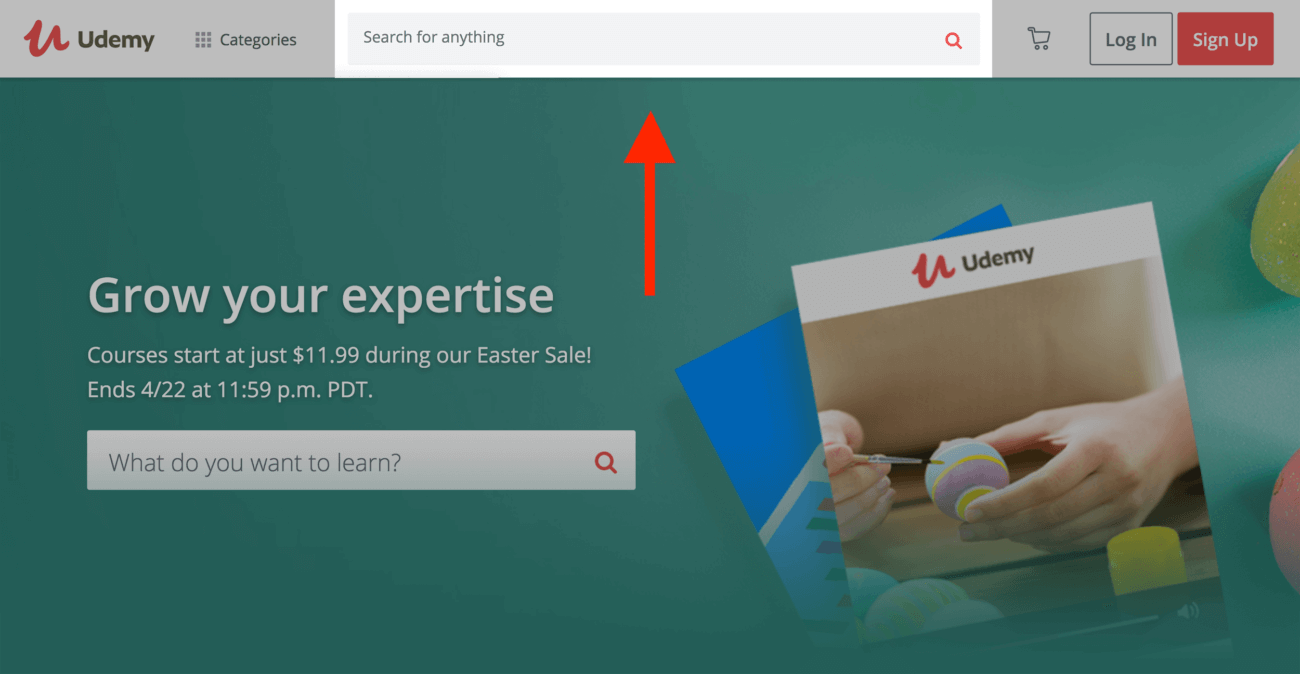
Either way, you'll find content that people are PAYING to access.
For example, let's say you run a blog about graphic design.
Head over to the design category in Udemy….
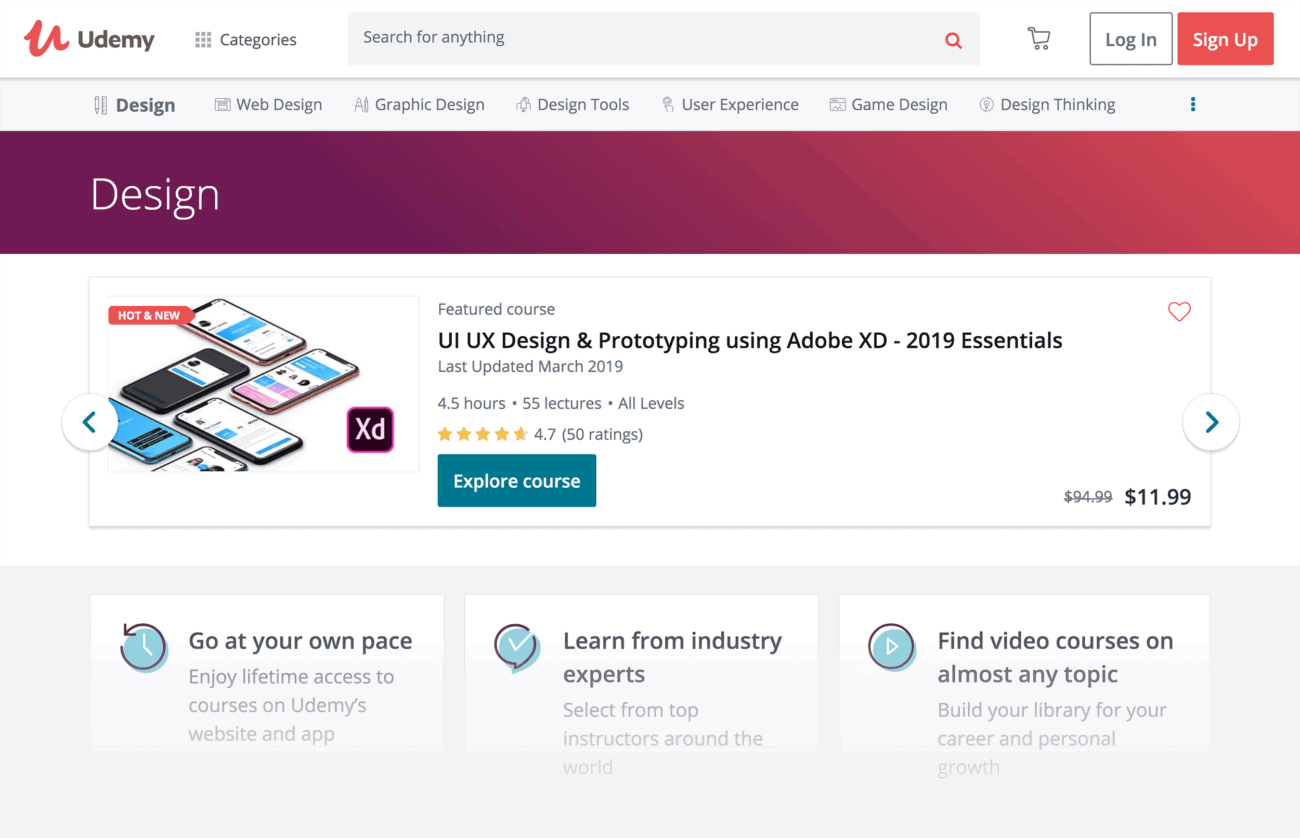
…and scroll down to their best-selling courses:
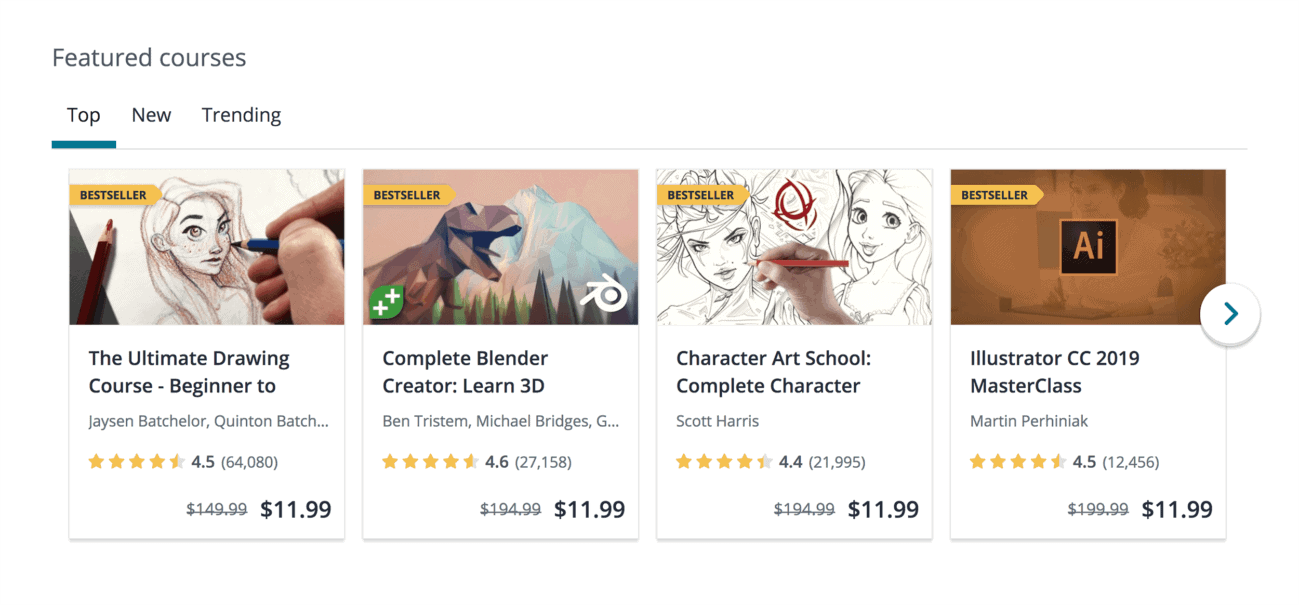
And within 5 seconds you have a list of proven topics:
- 3D Modeling
- Designing and coding WordPress themes
- After Effects tutorial
- How to use Adobe Illustrator
Very cool.
Amazon Table of Contents
First, search in Amazon for a keyword that describes your blog.
Then, look for a book with lots of ratings.
(This shows you that people actually bought the book)
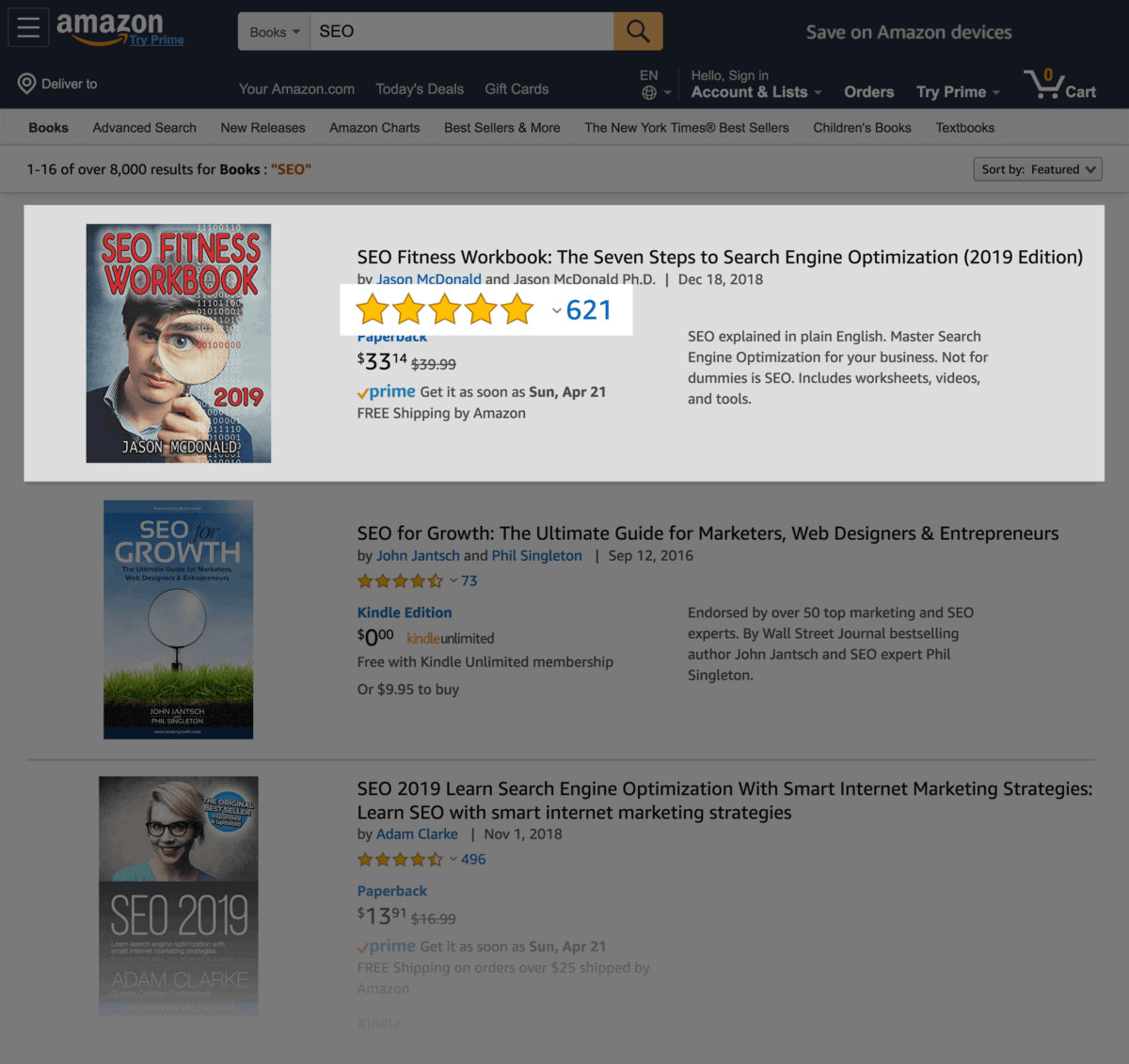
Finally, click "Look Inside" to see the table of contents.
And just like with Udemy, you get a list of topics presented to you on a silver platter:
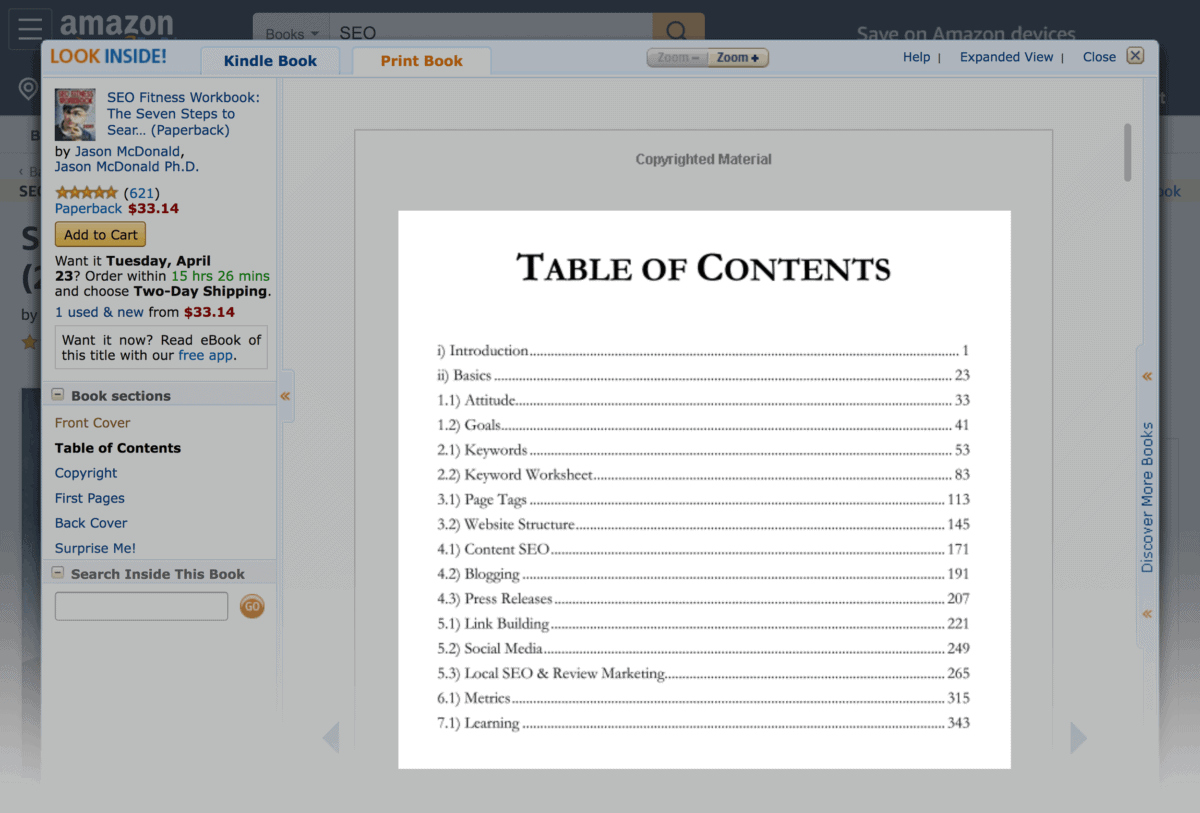
Which leads us to…
Ahrefs "Top Pages"
Now it's time to steal your competitor's best topics.
First, grab a competitor and pop it into Ahrefs.com.

Then, hit "Top Content".

And you'll see the exact content that's worked best for that blog (in terms of social shares and backlinks):

BuzzSumo's "Evergreen Score"
You already know that BuzzSumo is a GREAT tool for finding content ideas.
(In fact, BuzzSumo is one of my favorite content marketing tools)
And they recently added a VERY cool feature that makes this tool even more useful:
"Evergreen Score".
Here's how it works:
First, type a keyword into BuzzSumo just like you normally would.

By default, BuzzSumo shows you content that has lots of social shares.

But here's the problem:
You can't tell whether that content went viral for a day and quickly flamed out…
…or if it's still racking up shares and links years later.
That's where the Evergreen Score comes into play.
It shows you content that people share and link to MONTHS after it first went live:
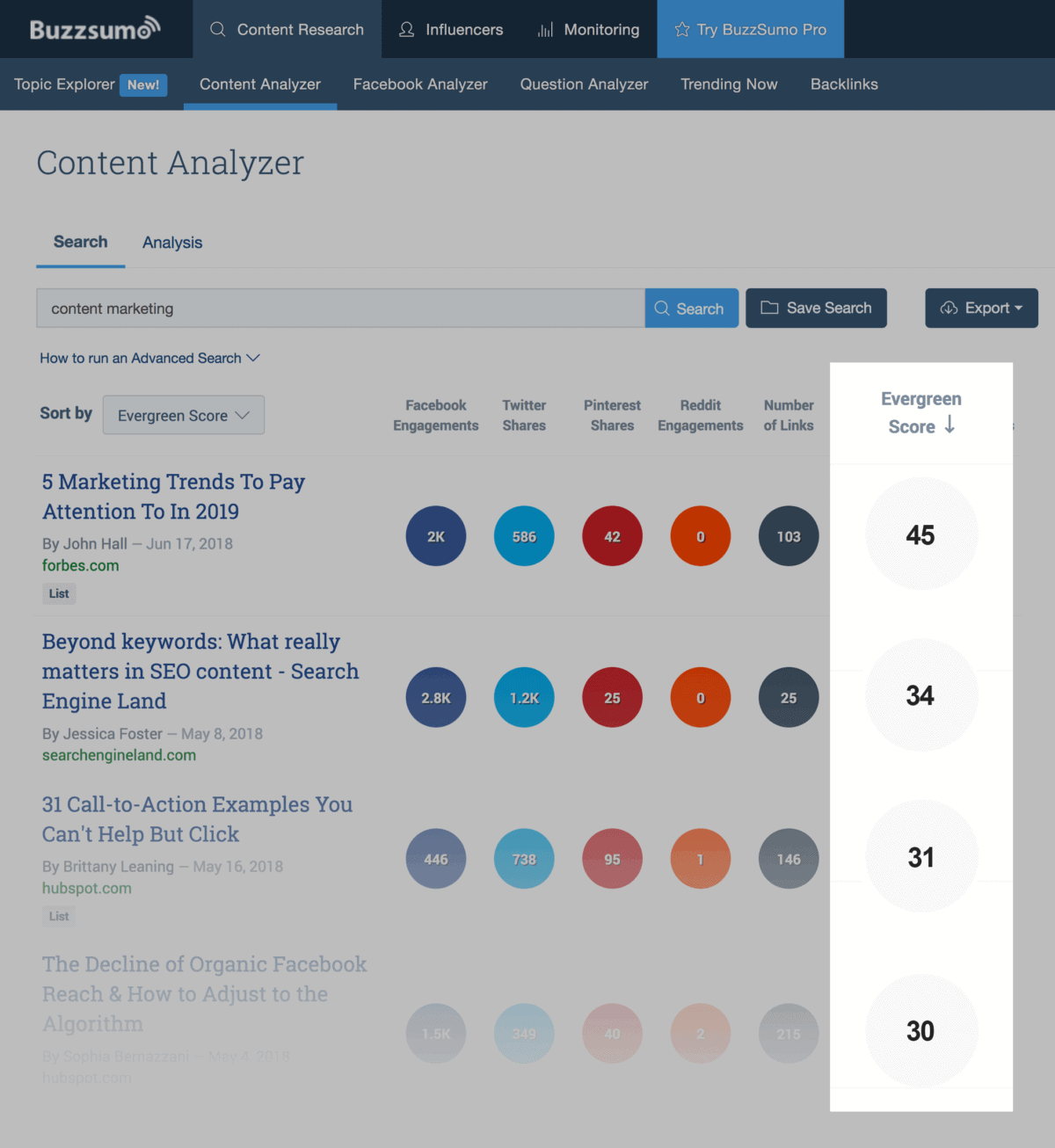
That way, you can publish content that brings you traffic for YEARS.
Conference Agendas
This is quickly becoming my FAVORITE ways to find killer topics.
First, head to a conference website in your niche.
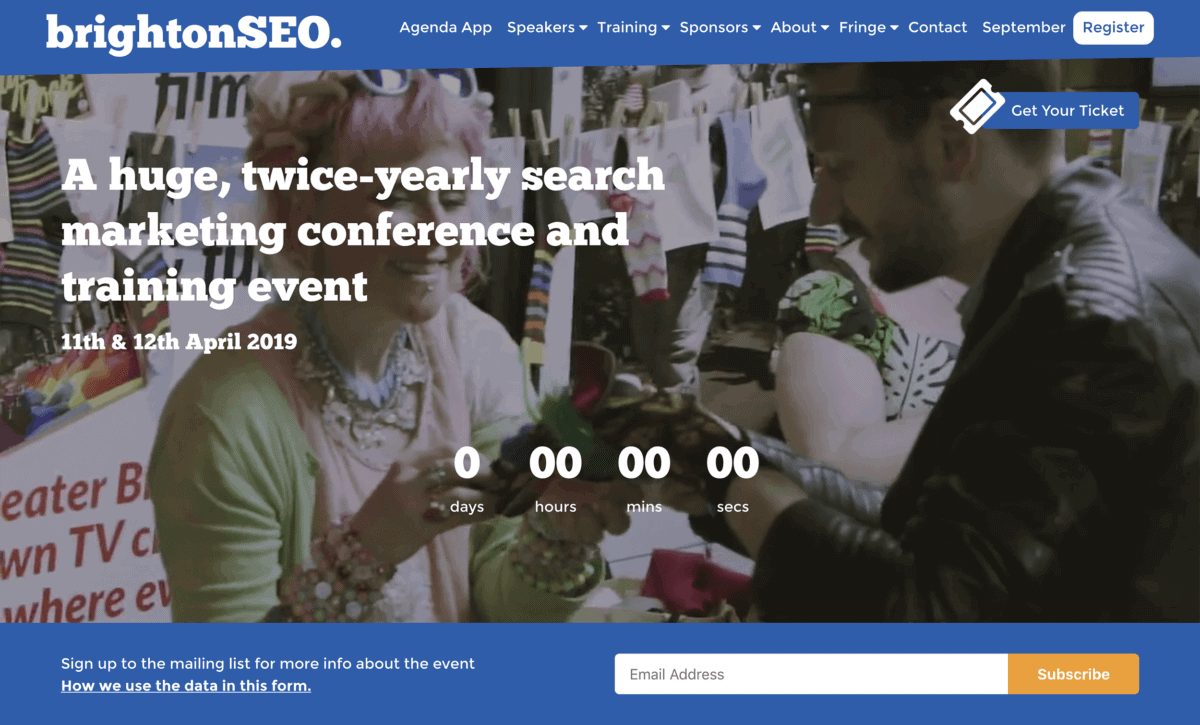
Go to the agenda page:
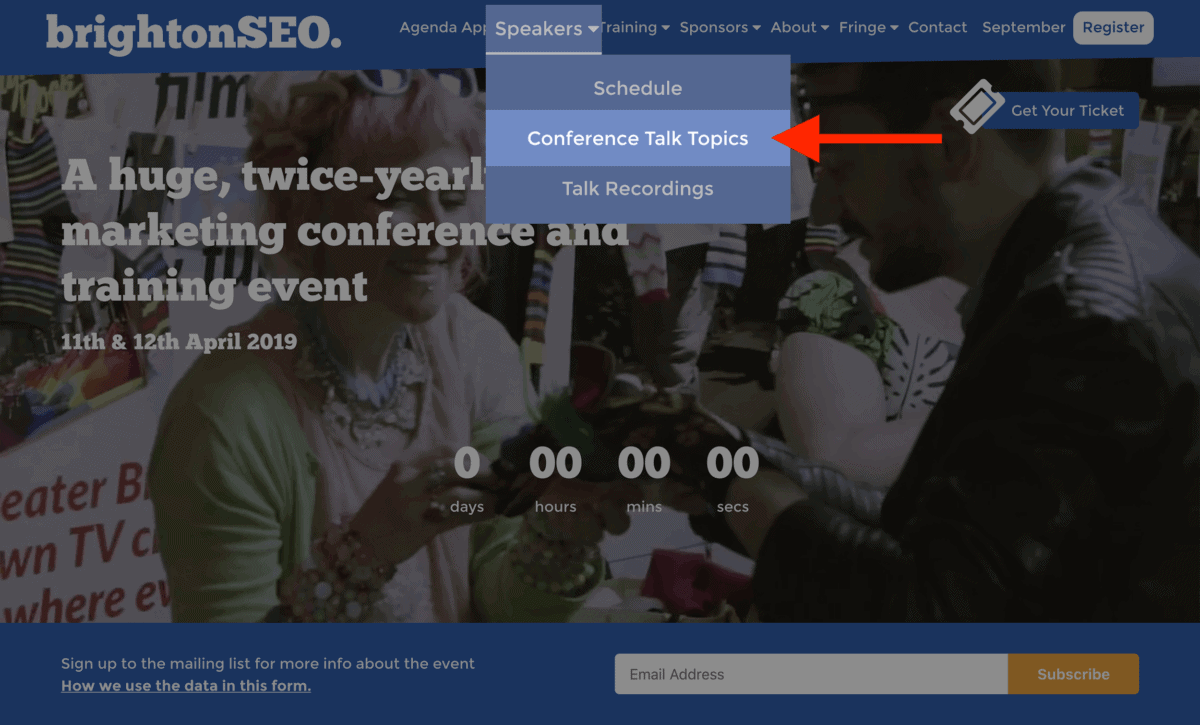
And you'll see topics that people are (again) paying to learn more about:
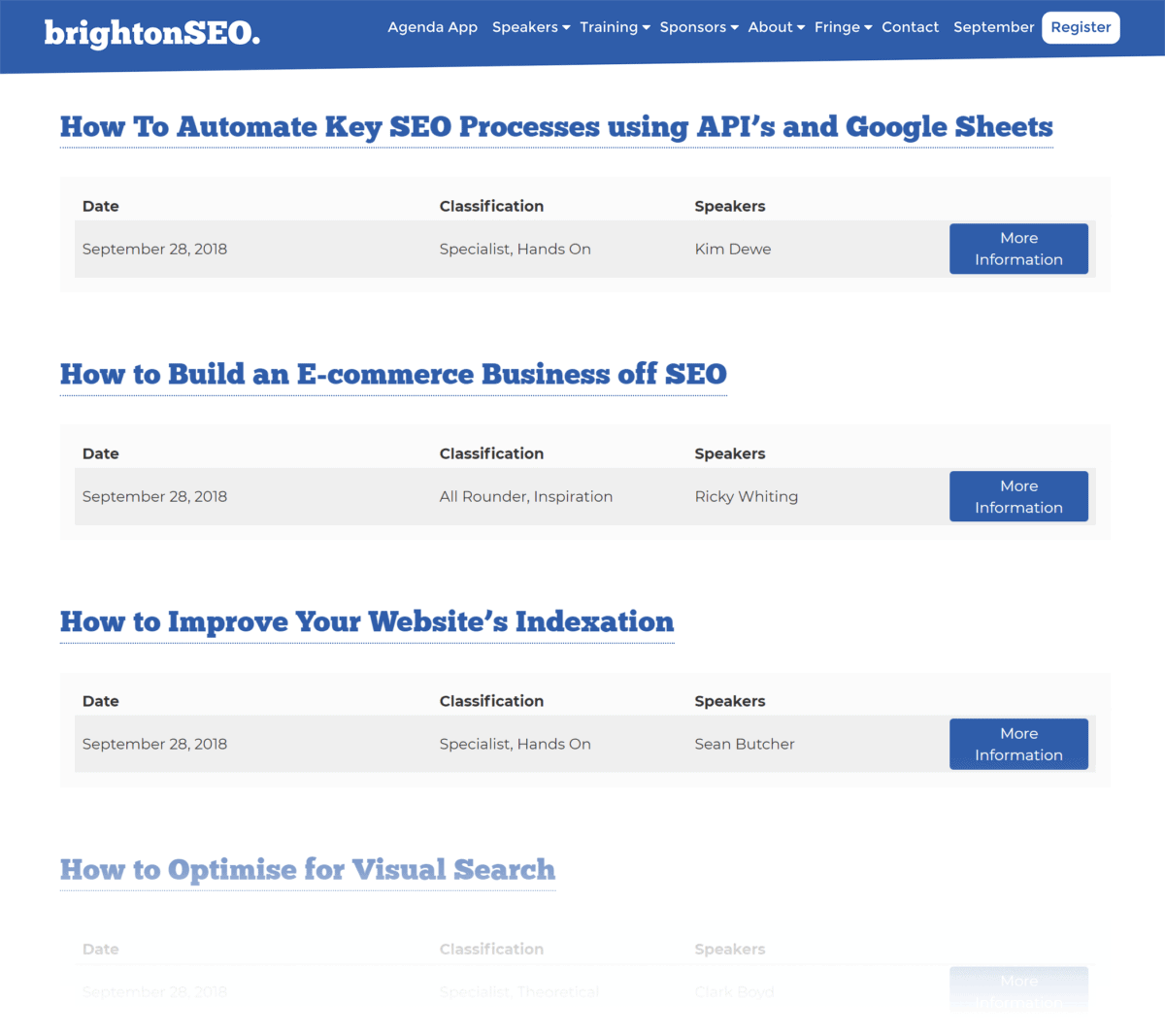
Pro Tip: Pop the conference agenda page into the Google Keyword Planner.

Choose "This page only":
And you'll get a list of targeted keyword ideas… straight from Google.

Chapter 2:Blog Post Templates

Now that you have a topic, it's time to get started on your post.
And I have great news:
You don't need to start from scratch, suffer from writer's block, or stare at a blank white screen.
Instead, use one of the awesome blog post templates that I'm about to share with you.
#1: Expanded List Post
What It Is
A regular list post… but better.
List posts are a blogging mainstay. And for good reason: they're a collection of bite sized tips that people can use to get a specific result. The issue is: traditional list posts usually leave out key details.
(Like how to put each tip into practice)
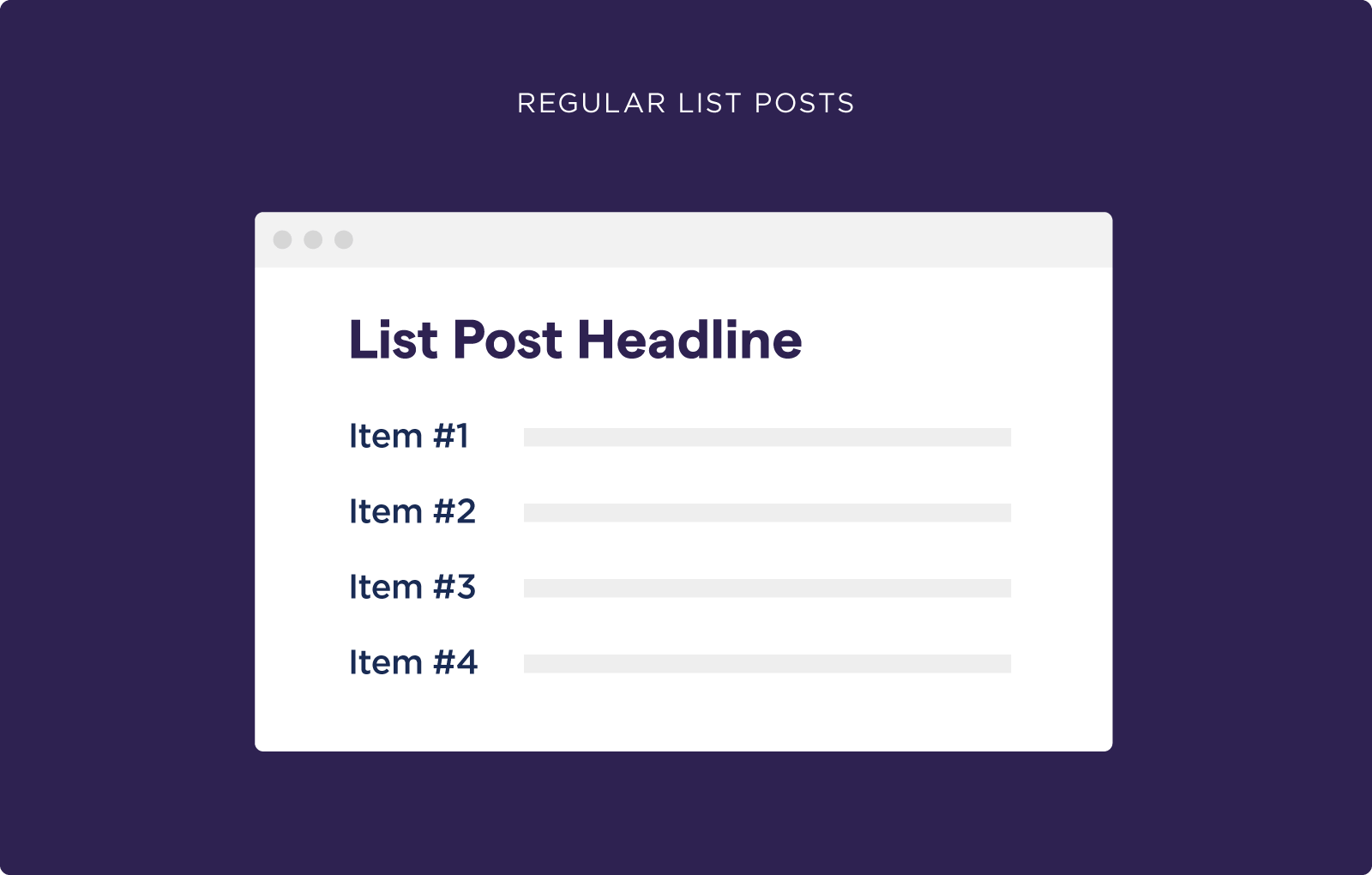
But the Expanded List Post is completely different.
With the Expanded List Post, you give LOTS of detail about each item on your list.
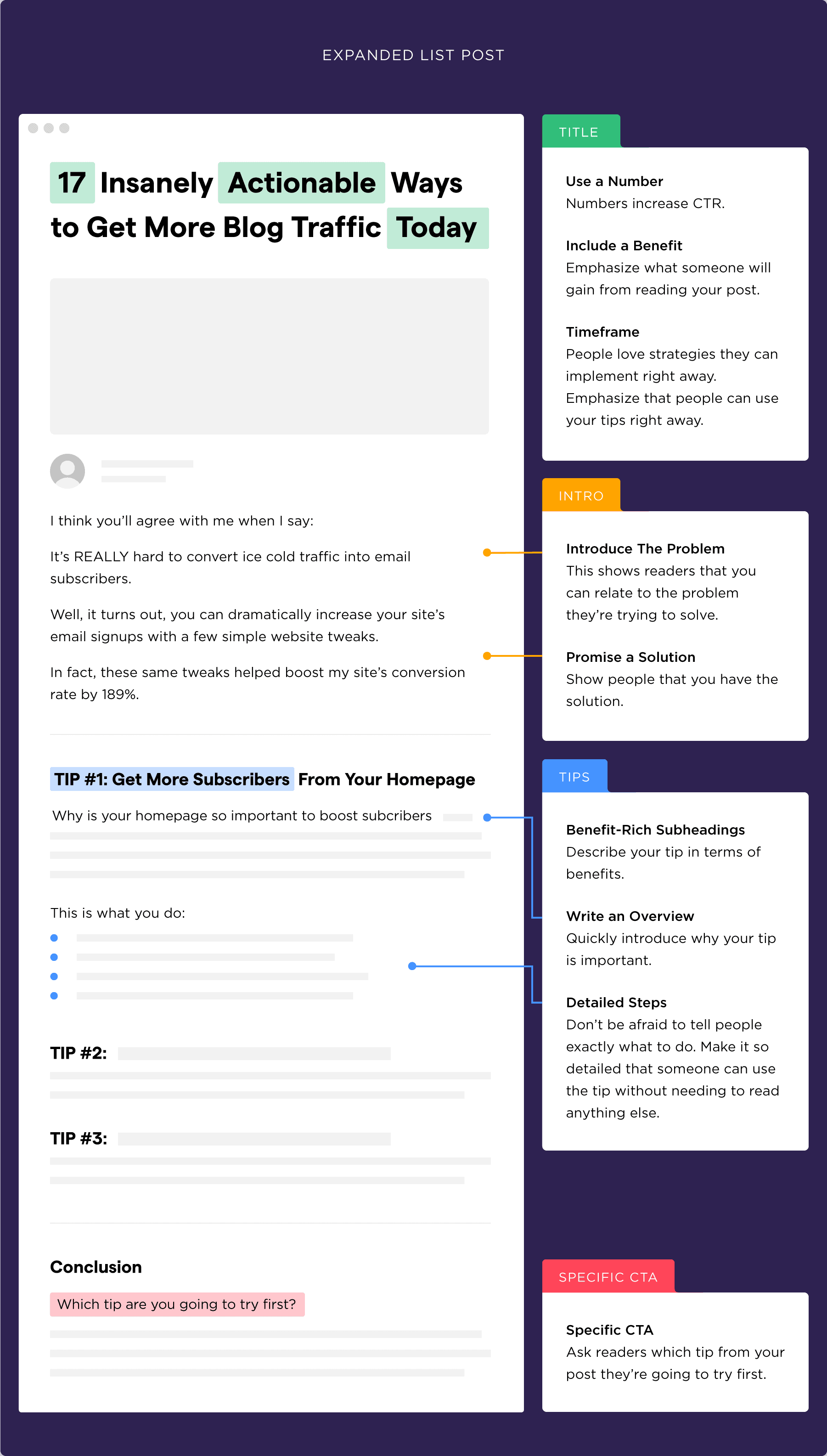
Why It Works
Normal lists posts make people do a ton of extra work.
For example, let's say the first tip from a list post is: "Eat Eggs at Breakfast"
Well, that leaves out A LOT of important info, like:
- What time should I eat?
- How do I cook the eggs (hard boiled vs. scrambled)
- What about organic and free-range eggs?
- Can I eat anything with the eggs?
Well, the Expanded List Post answers all of those questions and more.
That way, your reader doesn't have to fill in the blanks.
Real Life Example
A while back I published: "21 Actionable SEO Techniques That Work GREAT".

And this Expanded List Post is one of the most successful pieces of content that I've ever published.
To date, my post has 13k social shares:

1,118 comments:

And backlinks from over 857 domains:

My secret?
Unlike most list posts, I gave people detailed steps for each and every tip:
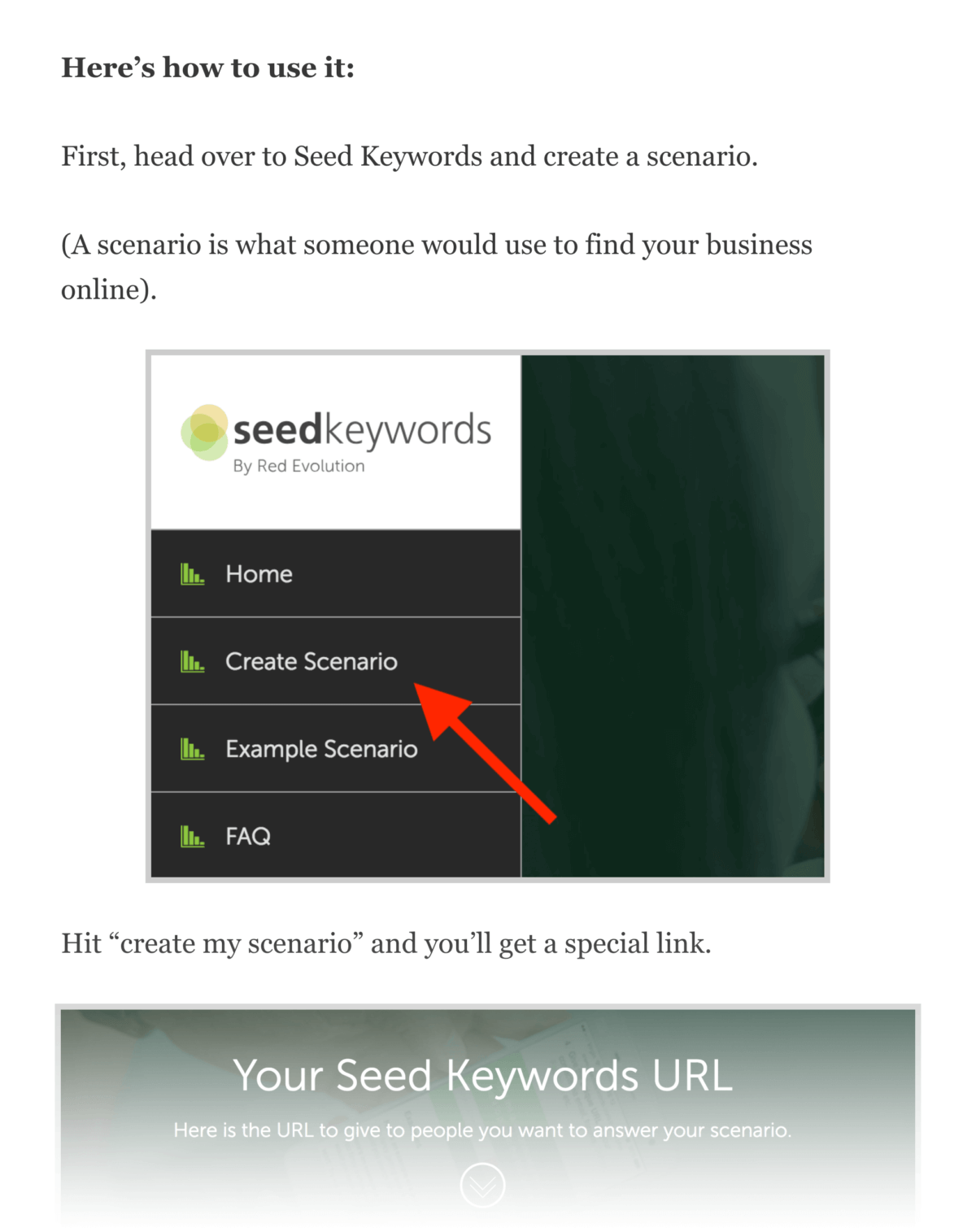
#2: The Branded Strategy Case Study
What It Is
Your Branded Strategy Post solves a problem that your target audience struggles with.
And when you give this solution a "branded" name? You're instantly seen as an industry expert.
There's only one catch:
You need to prove that it works.
Enter: The Branded Strategy Case Study.

Why It Works
Your branded name gives people something tangible to link to.
It also helps establish you as an authority in your niche.
(If you created your own strategy, you MUST be an expert)
Real Life Example
A few years ago I was having a hard time building my email list.
And after trying a bunch of different strategies, I finally found something that worked:
Offering people VERY targeted lead magnets.

So I decided to write a blog post about my experience.

And I made sure to give my new strategy a name:
The Content Upgrade.
This simple little case study has racked up 3.49k backlinks from 677 domains.

And most of these links are a direct result of my unique, branded name:
#3: Tools of the Trade
What It Is
A "Tools Of The Trade Post" is a list of tools that you recommend.
To be clear:
These tools DON'T have to be software.
A "tool" can be a morning routine, a foam roller or a B12 supplement.
As long as the tool helps your reader solve a problem, you're good.
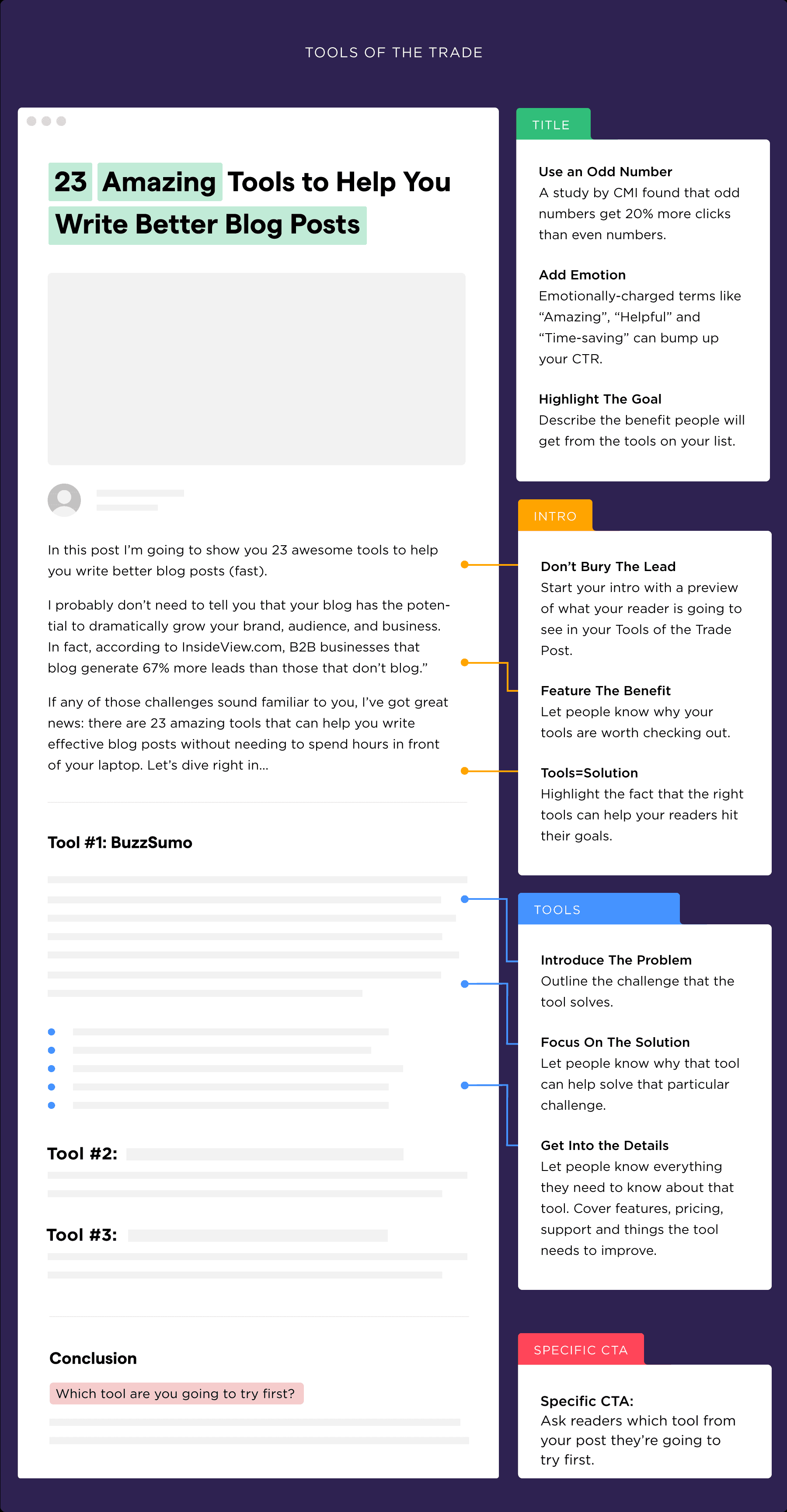
Why It Works
Strategies are hard.
Approaches are tricky.
But tools are EASY.
(In fact, the #1 question I get is: "Brian, what SEO tools do you recommend?").
That said:
Finding the right tool can be REALLY hard.
That's where your "Tools of the Trade" post comes in.
It's a hand-picked list of the best tools… all in one place.
Real Life Example
Last year I published a blog post called: How to Learn SEO In Record Time.

It was a list of "tools" (resources) to help people learn SEO.

It didn't go viral or anything. But it got over 1.6k shares:

And it currently ranks in the top 5 for my target keyword:
#4: The Ultimate Guide
What It Is
A complete resource that covers EVERYTHING.
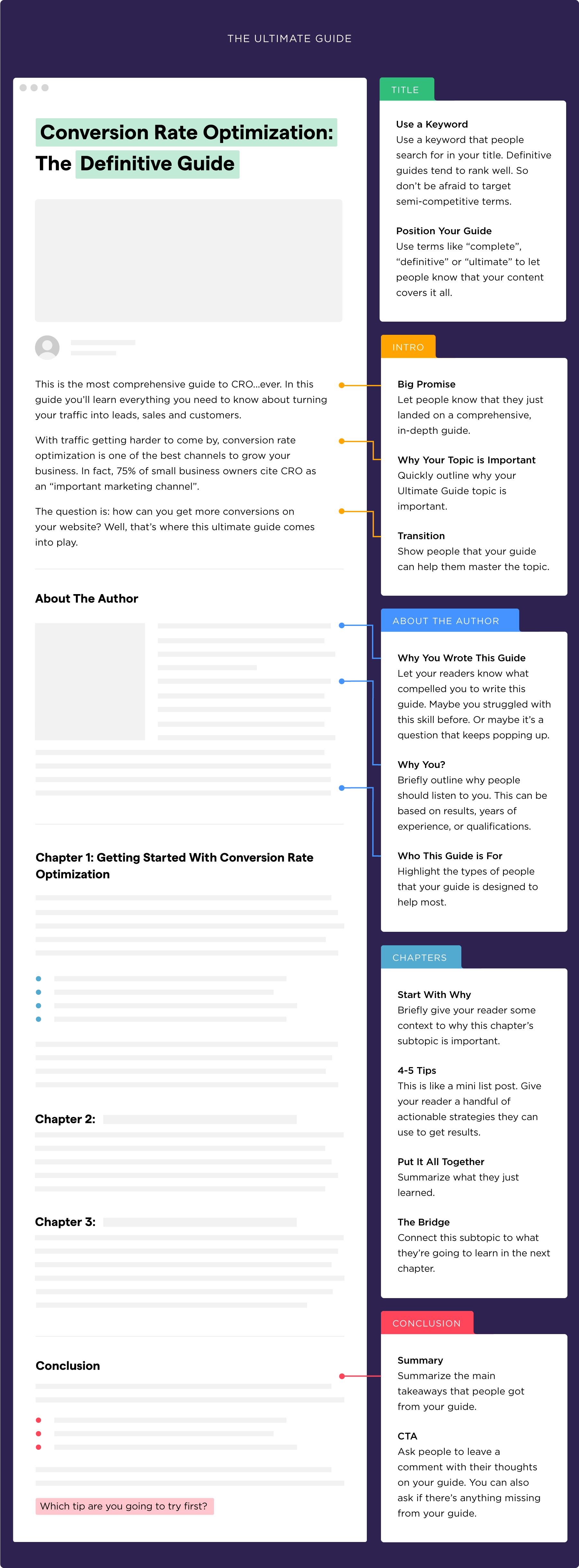
Why It Works
Your guide gives someone everything they need to know about a topic… in one place.
So there's no need for people to read 18 different posts.
Once they find your guide, they have everything they need to know.
It's also great for getting backlinks.
That's because bloggers will link to your guide when they write about your topic:
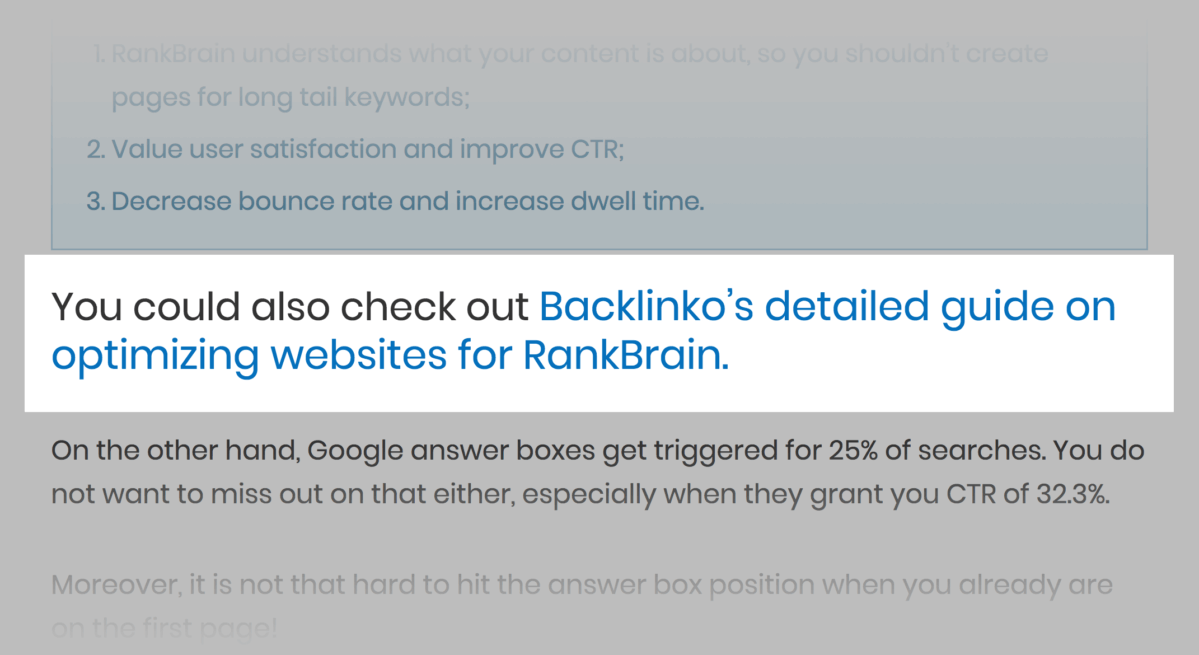
Real Life Example
The first guide I ever published at Backlinko was: "Link Building for SEO: The Definitive Guide".

(Since then I've updated the guide at least 50 times)
Because my guide is SUPER thorough, other SEO and content marketing blogs were happy to link to it:
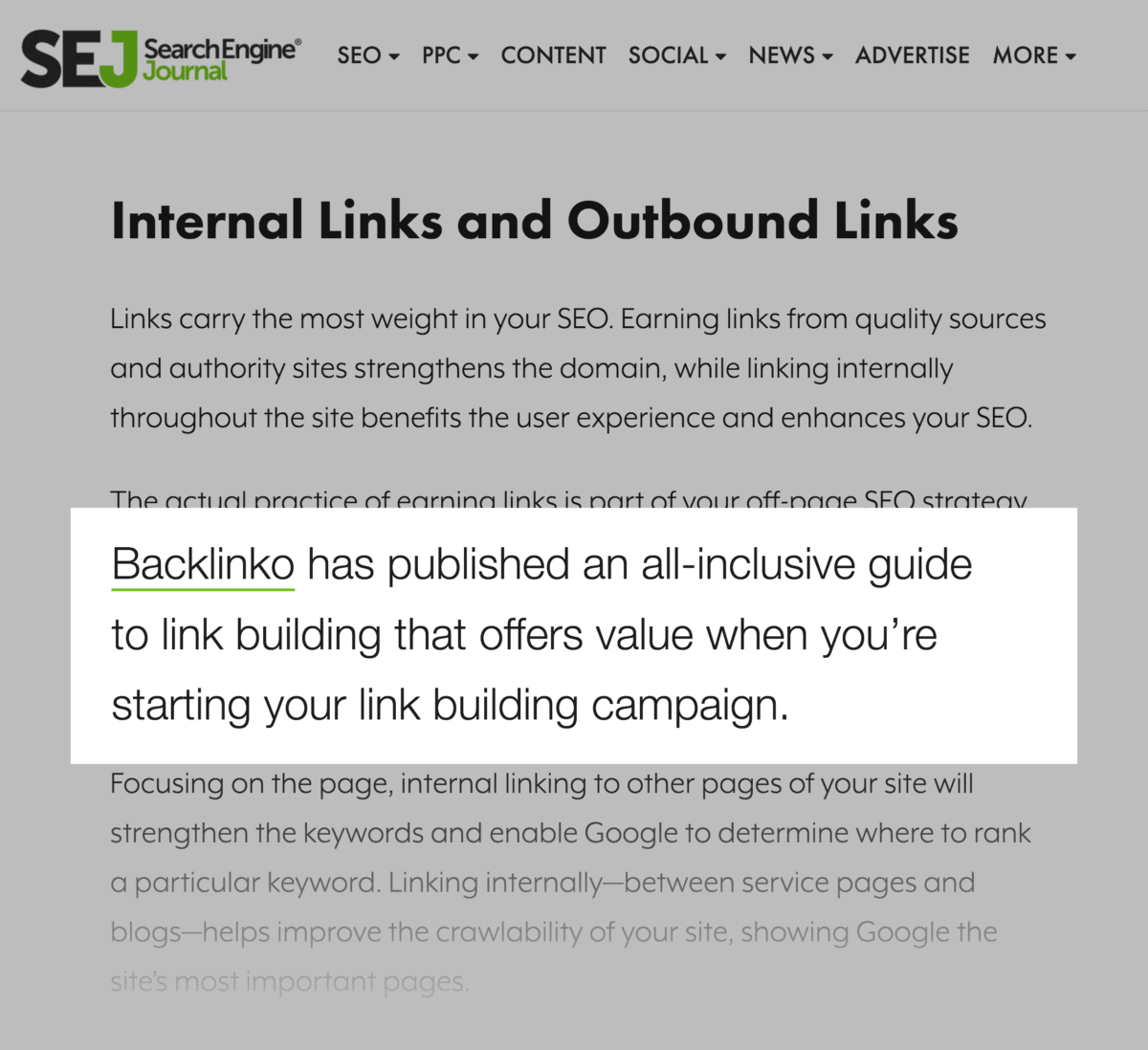
And share it on social media:
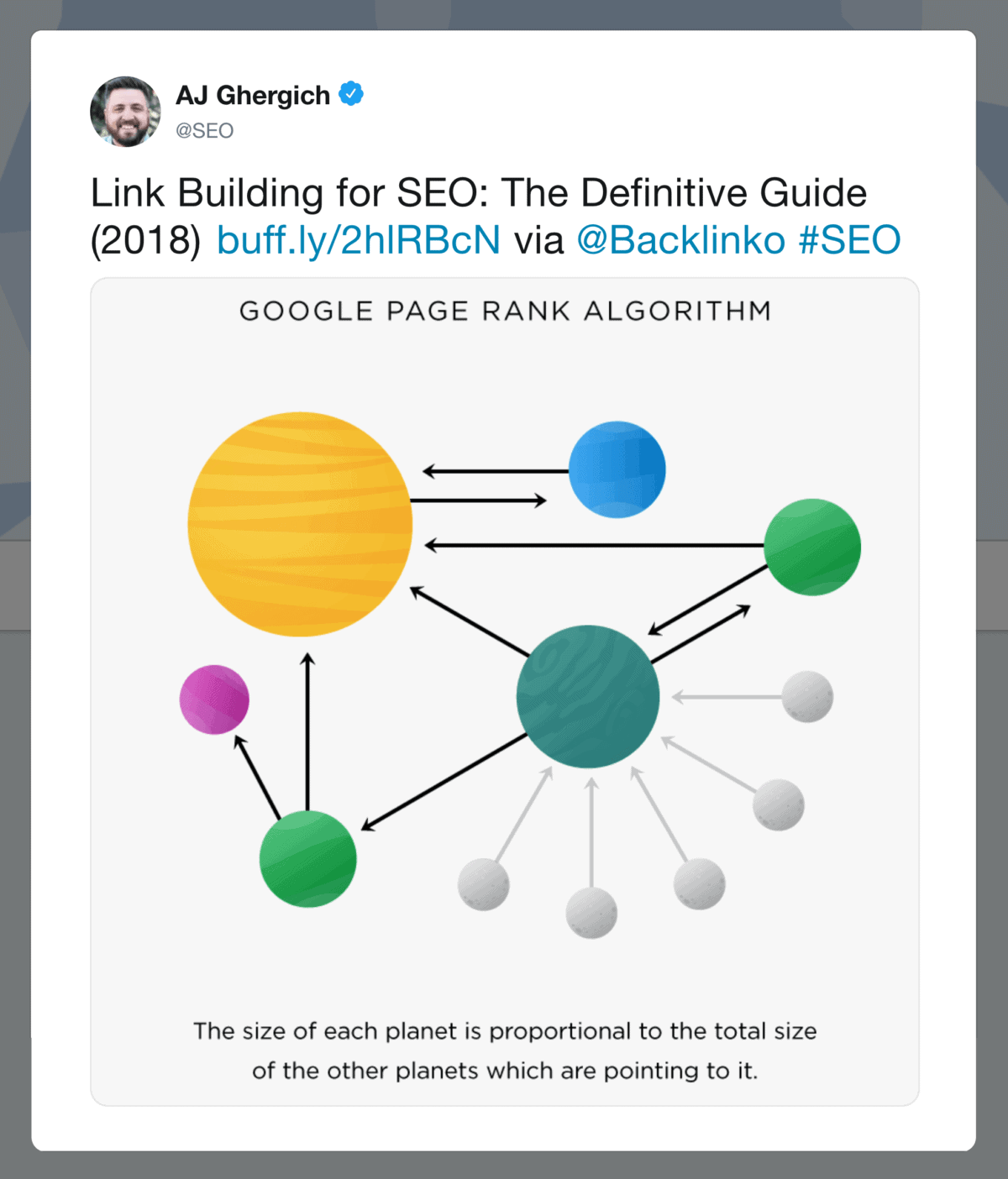
#5: The Complete List
What It Is
A Complete List is like an ultimate guide in list form.
So instead of a guide, you take every…
- Tip
- Item
- Tool
- Technique
- Strategy
- Example
- Case study
…And put it in one place.
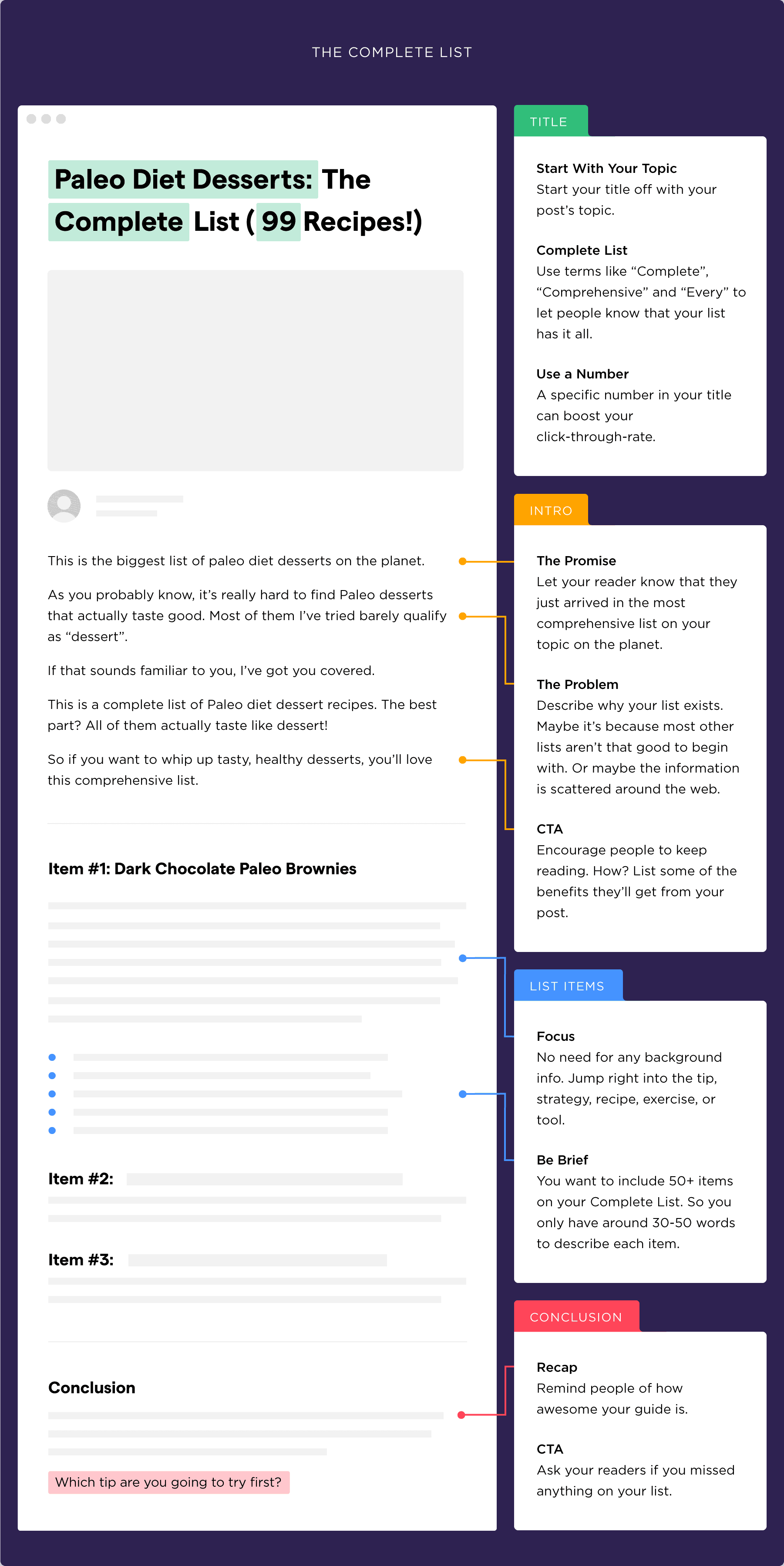
Why It Works
First off, Complete Lists have a legit "WOW" factor.
(A list of 200+ anything is impressive)
Second, you're curating scattered information on a single page.
Real Life Example
In 2015 I published "SEO Tools: The Complete List".

It's a MASSIVE list of over 190 SEO tools.
(Yup, I personally tried each and every one of them)
But I didn't just list a bunch of tools and call it a day.
I made sure to highlight my favorite tools:

And the post has been a traffic MAGNET for me.
In fact, 10,909 people visit that post every single month:
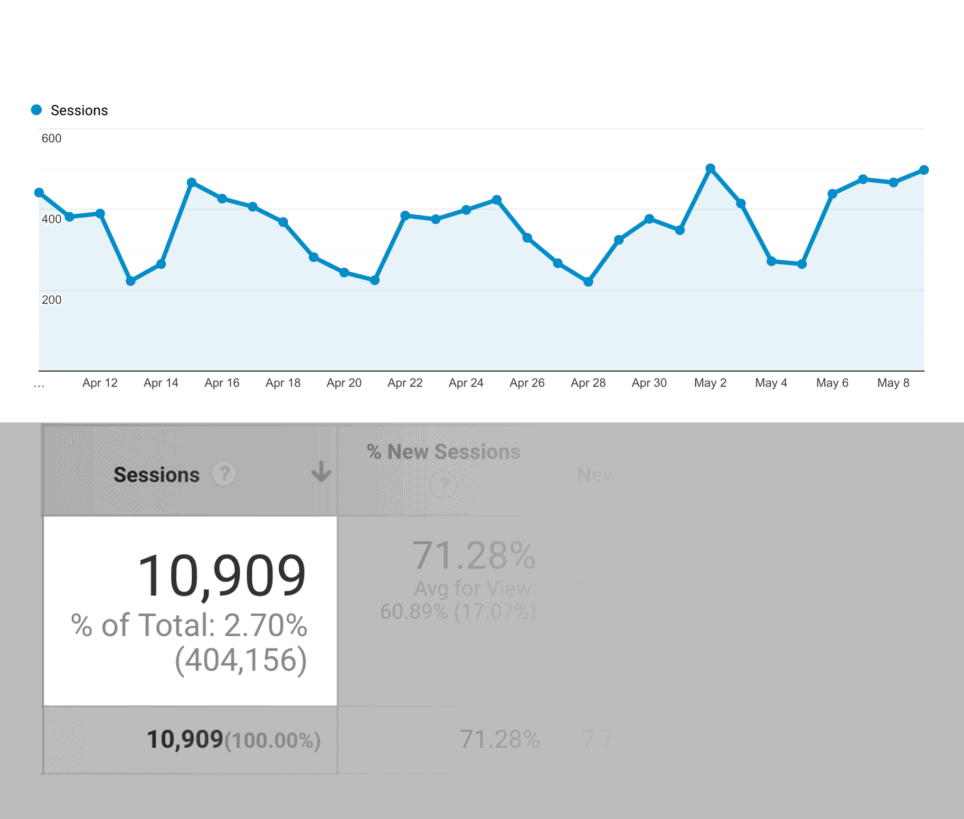
Chapter 3:Create an Awesome Headline

When it comes to writing a blog post, your headline can make or break your entire post.
So it's important to nail this step.
And in this chapter I'm going to show you how to write amazing blog post headlines.
Start Your Headline With These Phrases
BuzzSumo recently analyzed 100 million headlines.

So, what did they find?
That headlines that start with these 20 phrases tend to get the most shares:
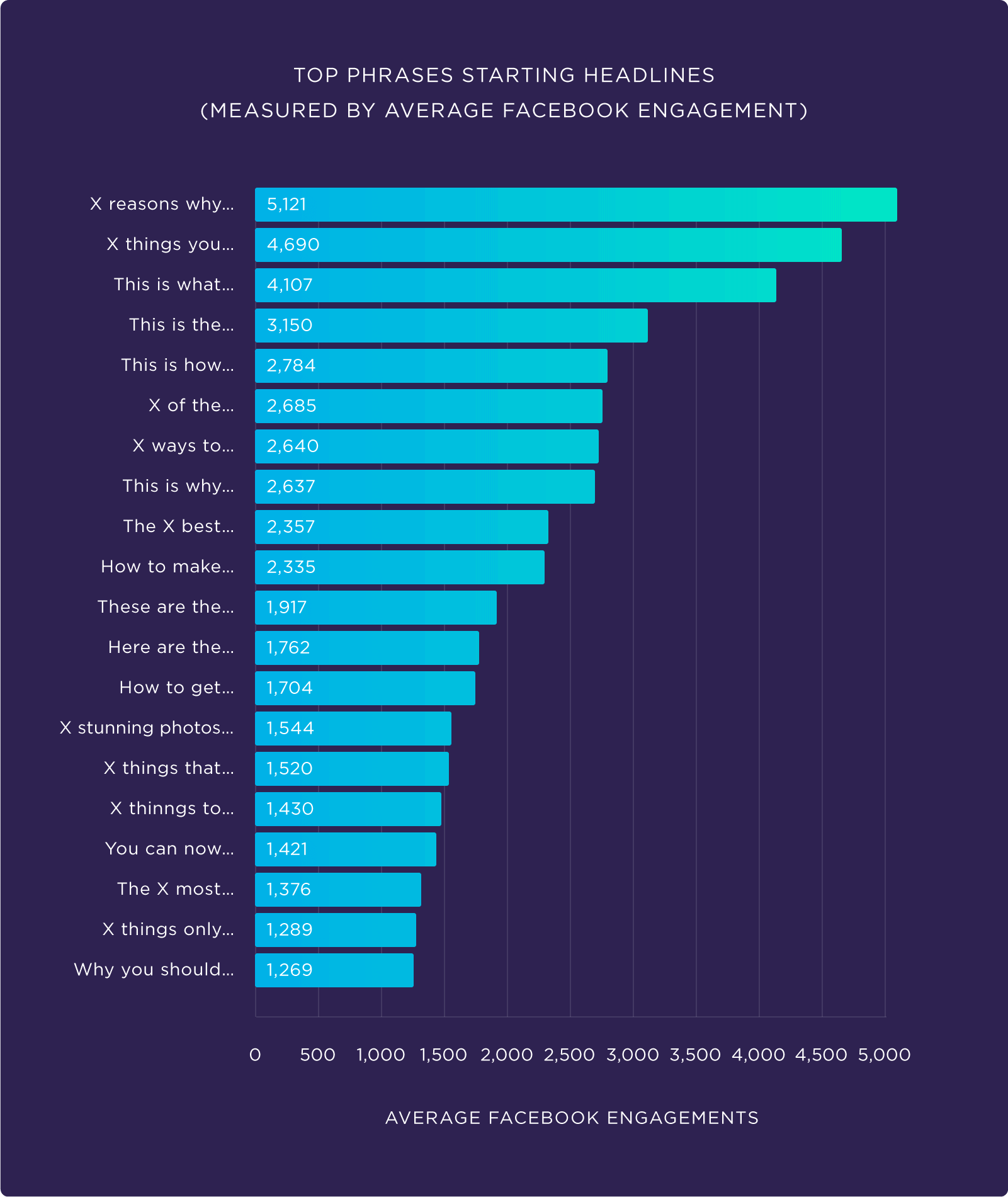
For example, this recent post from my blog started off with one of these tested phrases:
12-18 Words
Let's look at another interesting finding from that BuzzSumo study.
They discovered that the sweet spot for headline length is between 12-18 words.
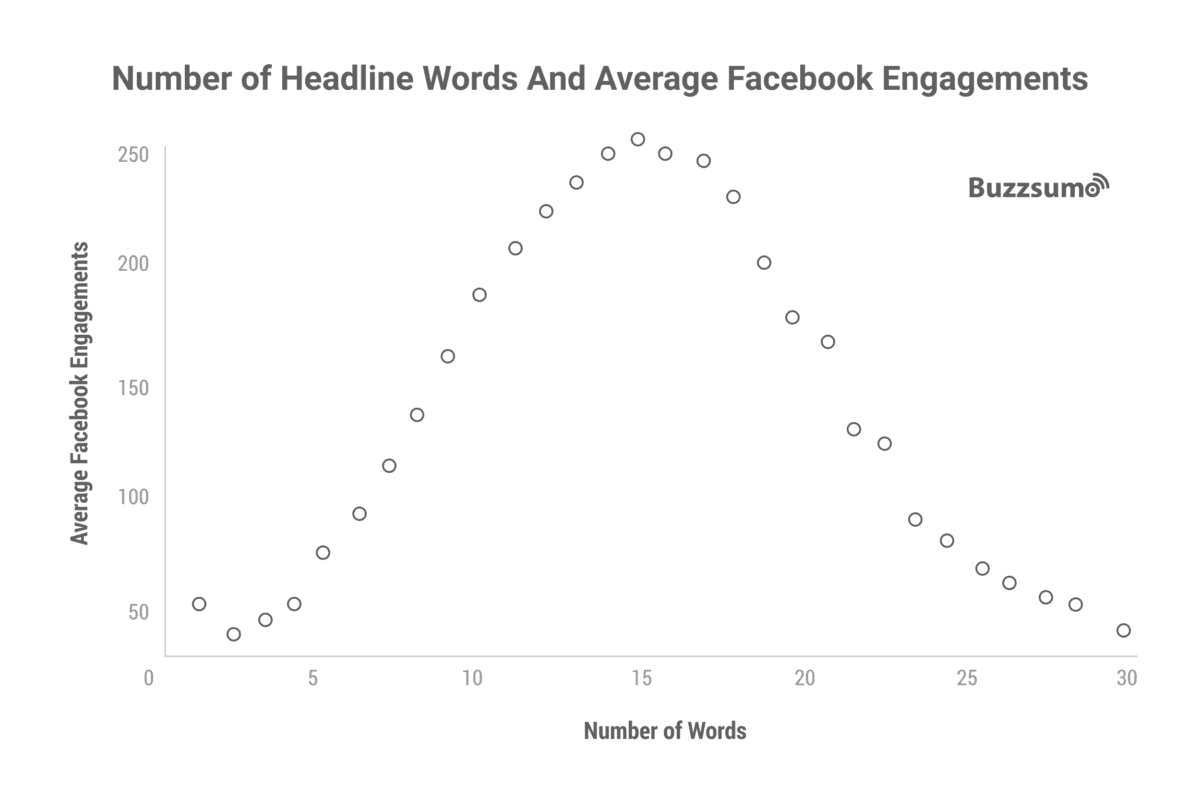
(At least when it comes to social shares)
Add Brackets (And Parentheses)
This is one of my favorite headline hacks.
Why?
A study by OutBrain found that adding brackets to headlines can improve CTR up to 38%.

And my real world experience backs this up.
6 of my top 10 most popular posts have brackets or parentheses in the title:

In B2B? Use These Proven Headline Phrases
If you're in B2B (like me), you know that clickbait titles don't work that well.
Fortunately, the BuzzSumo study I mentioned earlier also analyzed a subset of B2B post titles.
And they discovered that these 20 phrases work GREAT in B2B:

Optimize for EMV
Every copywriter knows that emotional headlines get LOTS of clicks.
And now there's data to back this up.
CoSchedule recently published a blog post headline study.

Specifically, they analyzed a million headlines for "EMV".
(EMV="Emotional Marketing Value")
And they found a clear correlation between high EMV and social shares.

You can measure your EMV score using this tool from the Advanced Marketing Institute:

Just pop your headline into the tool…

…and you'll get your EMV score.

I try to get my EMV score to at least 25%.
I even have a few headlines with an EMV score of 70%+.

Chapter 4:Craft a Compelling Intro

Topic? Check.
Headline? Check.
Now it's time to grab your reader's attention.
How? Your blog post introduction.
4-7 Sentences
Let's face it:
No one likes long blog post introductions, like this:

That's why I limit my intros to 4-7 lines… MAX.
For example, my intro from this post is only 6 lines:
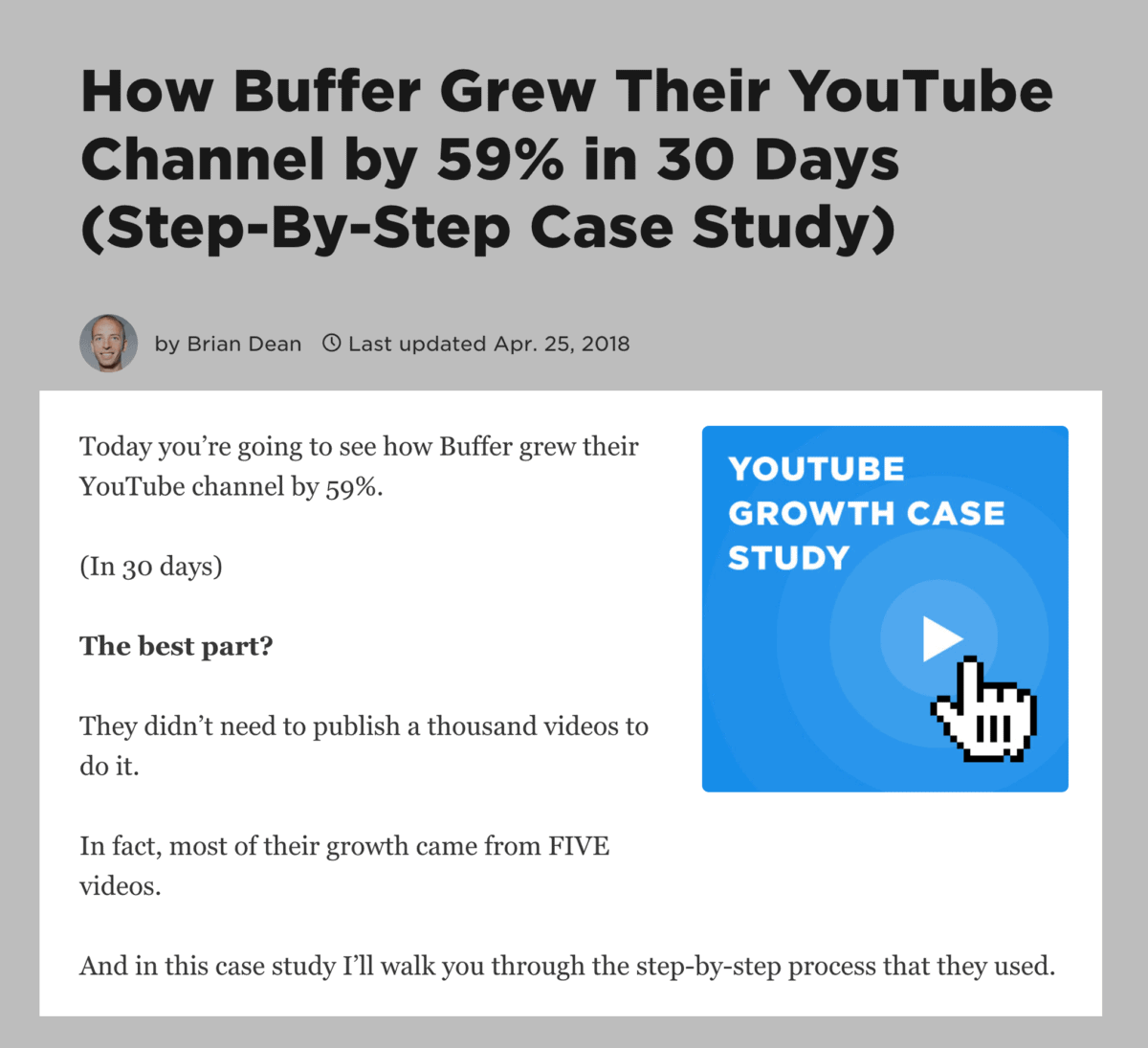
In my experience, 4-7 sentences is more than enough to hook people…
…and get them excited for the content they're about to read.
PPP Formula
The PPP Formula is KILLING it for me right now.
(The "PPP" stands for: Preview, Proof, Preview)
Here's a visual of the formula:

Now I'm going to break down each part of the PPP formula…
…and show you real-life examples of the formula in action.
First, you have the Preview.
This couldn't be any more simple.
Just let your reader know EXACTLY what to expect.
That way, when someone lands on your post, they know they're in the right place.
Here's an example:
Next, it's time for the Proof.
Here's where you show people that you can deliver.
Specifically, you want to prove that you know your stuff.
You can show proof with:
- Personal results
- Years of experience
- Number of clients
- Credentials or certifications
Here's an example:

Last up, we have the Preview… again.
The first preview was a high-level overview of your post.
The 2nd preview is a little bit different.
This preview is where you get specific about something from your post.
For example, in this intro, I preview the fact that the steps in the post aren't super technical.
Transition
I like to end my intros with a transition sentence.
In my experience, this transition helps push people to read the next section.
Here's an example:
Chapter 5:Write Your Post

Now it's time to show you how to write SUPER engaging content.
Specifically, I'm going to share 6 strategies that can make your blog posts 10x better.
Starting with…
Short Paragraphs
Want people to read your content? AVOID giant walls of text.
Here's an example of what I'm talking about:
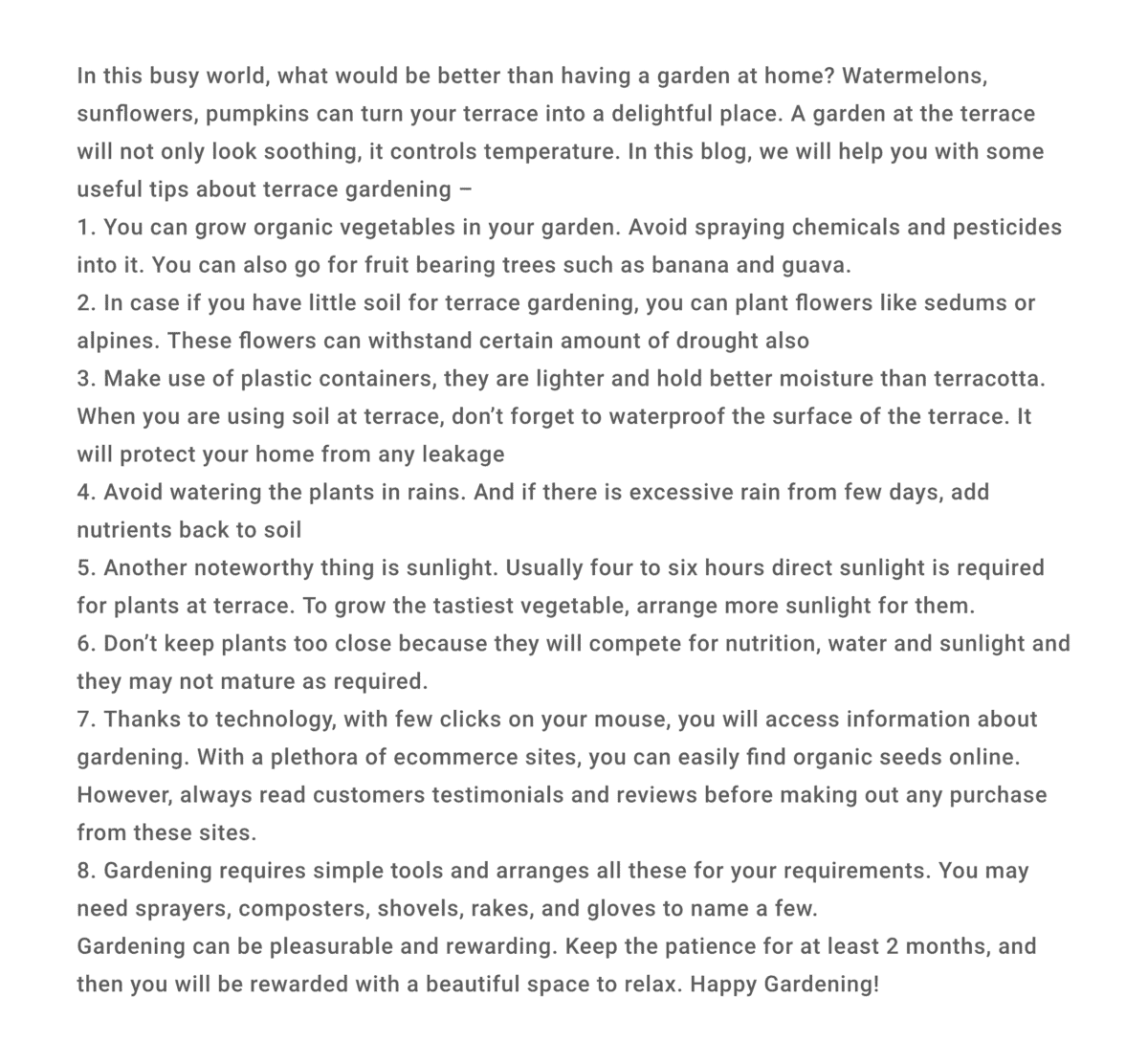
Instead, stick to paragraphs that are 1-2 sentences long.
Like this:
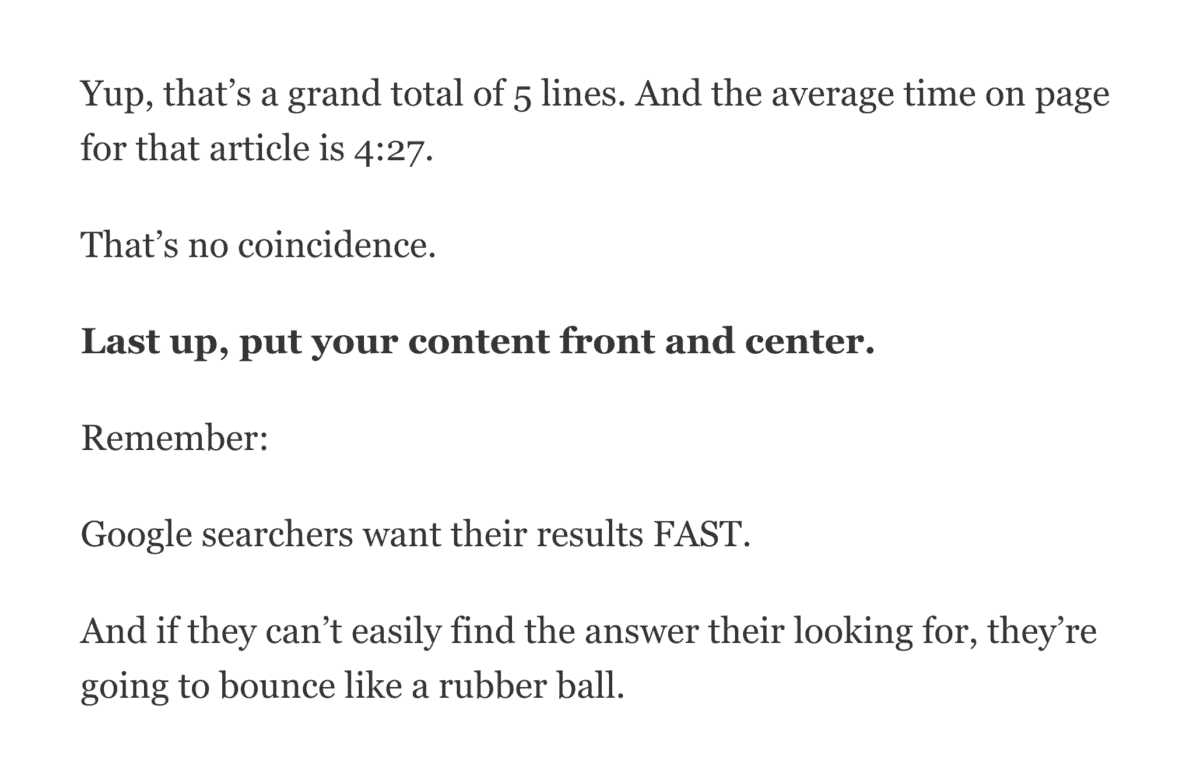
Why is this important?
Short paragraphs are easier to read.
(Especially on mobile devices)
Section Subheaders
I LOVE subheaders.
That's because subheaders break your content up into easy-to-read chunks.
For example, my post "The Complete SEO Checklist" has A LOT of content.

(In fact, that post is 4,328 words)
So I broke up the content into lots of little chunks. And added a list of bullet point links that take you to each section:
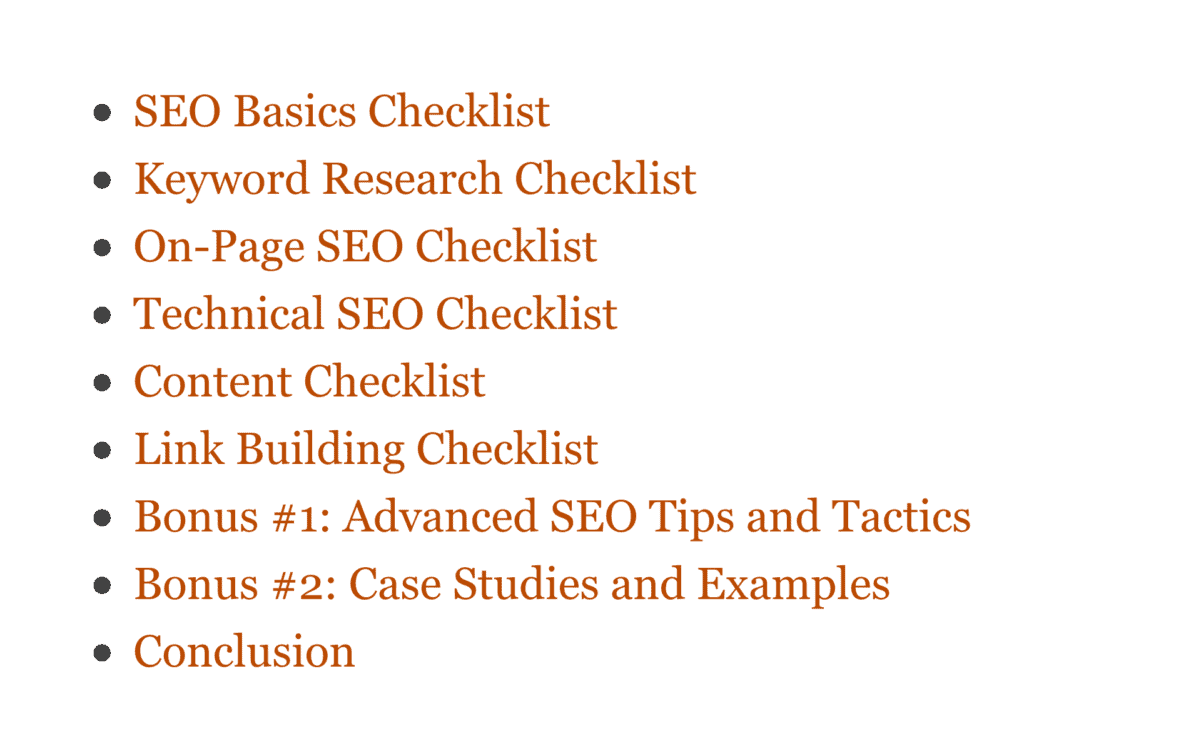
In fact, this single post has 9 subheaders.
Active Voice
If I could give people ONE writing tip for writing blog posts it would be:
Use the active voice!
Seriously.
The passive voice is just… lame.
On the flipside, the active voice is crisp and clear.
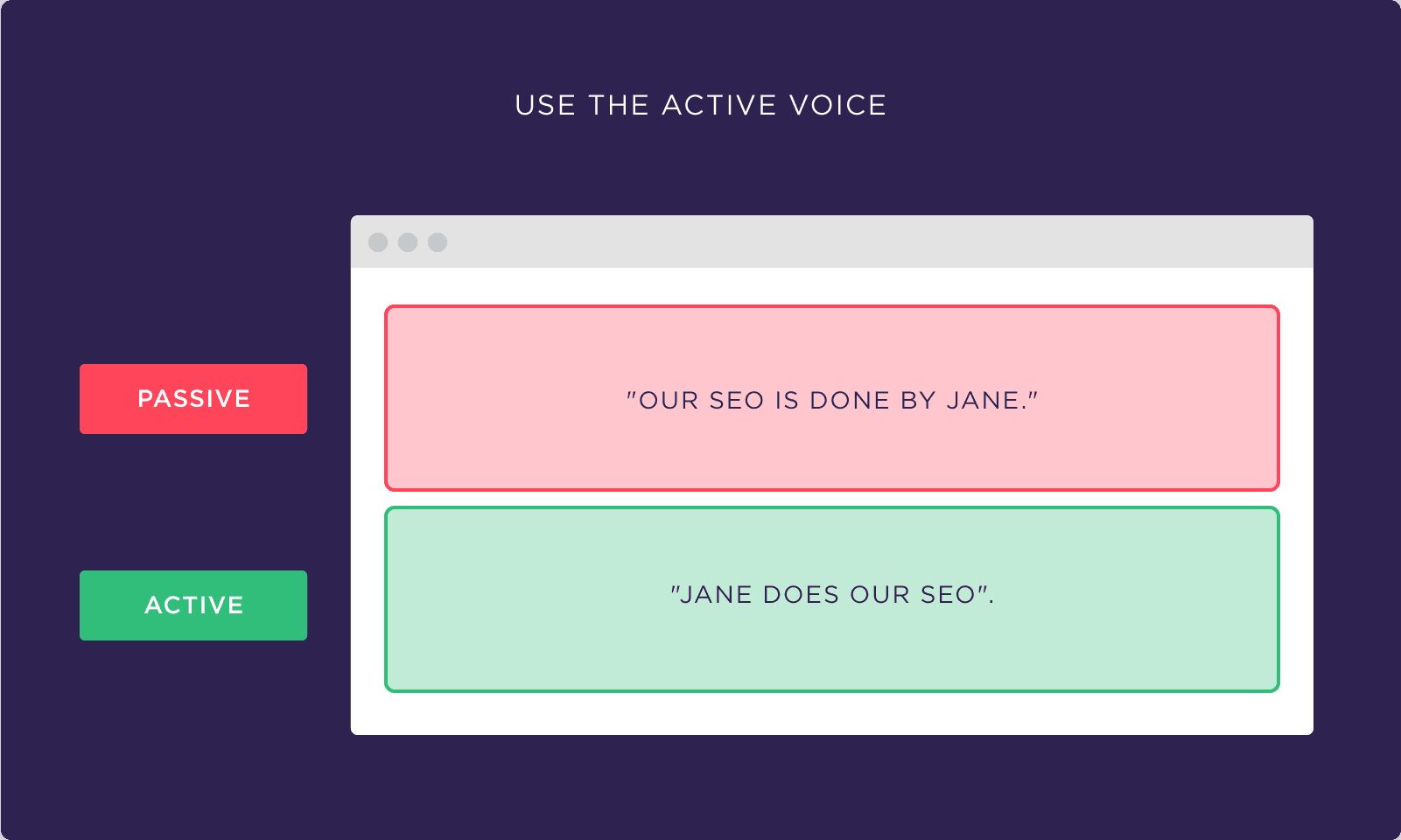
15-17px Font
You might have noticed that Medium.com posts are REALLY easy to read.

How do they do it?
They use 21px font.
If you're using anything less than 15px, you're losing lots of readers.
That's why we use 18px font here at Backlinko.

Write Like You Talk
This is the holy grail of great writing.
But it's not easy.
(Especially if you took English classes in high school)
With that, here's a tip:
Read your post out loud.
If it sounds weird, scrap that sentence.
This time, explain the same thing out loud.
You'll probably find that the same sentence sounds A LOT better.
Lots of Visuals
Screenshots.
Charts.
Pictures.
Infographics.
Don't be afraid to use a ton of visuals in every post.
For example, this post from my blog has 95 visuals:

Chapter 6:Add a Conclusion

Let's cap things off with your conclusion.
And let me be clear about something:
Your conclusion is VERY important.
(Especially if you want lots of people to comment on your post)
Fortunately, I've developed a simple, 3-step formula for writing AWESOME conclusions.
It's called "The TAC Formula".
Here's an overview of The TAC Formula:
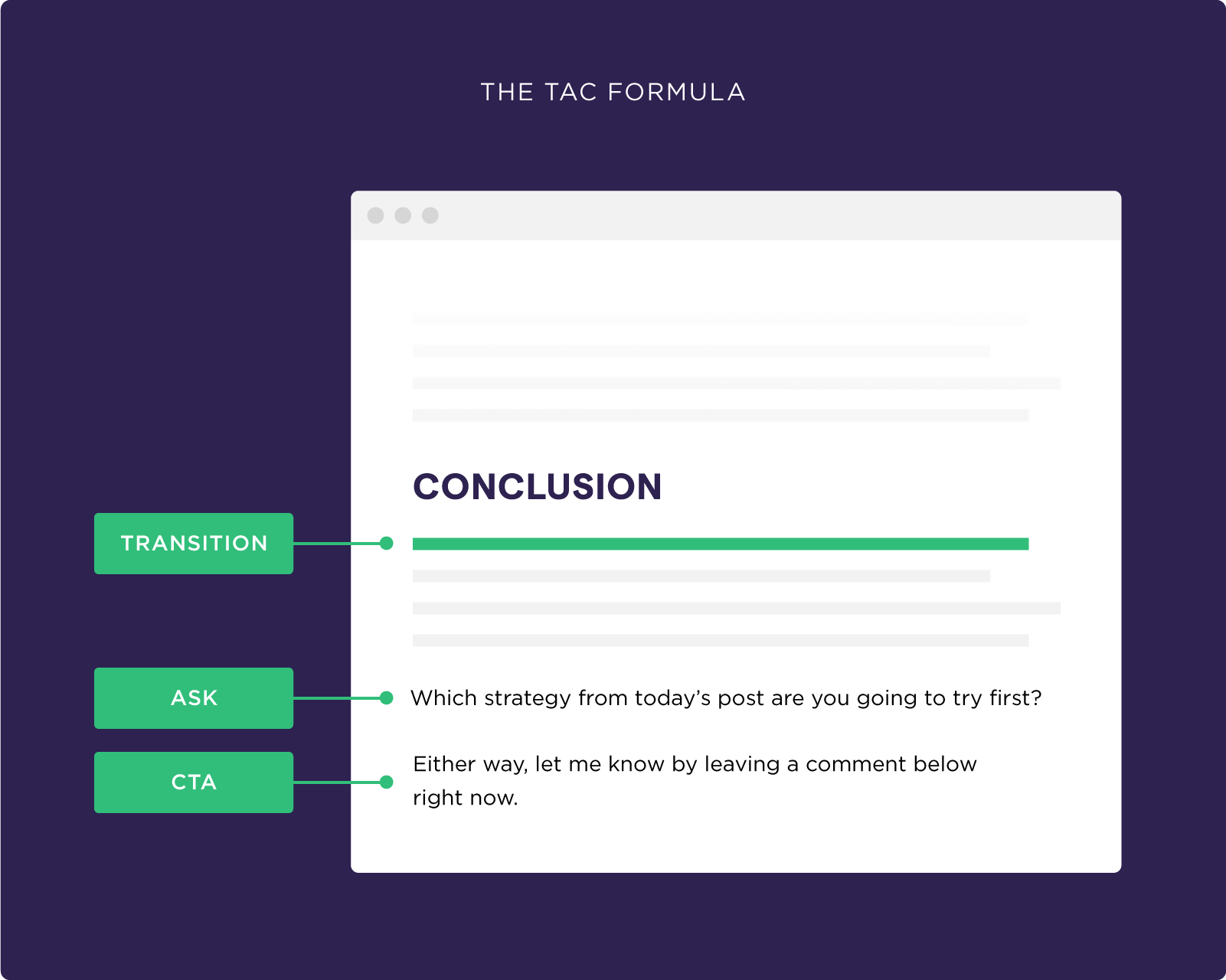
And now I'll cover the detailed steps…
Start your conclusion off with the Transition.
Your transition is just like it sounds:
It transitions people from your blog content to the conclusion section.
Here's an example:
Next, it's time for the Ask.
Here's where you ask your reader a VERY specific question.
In other words: don't ask: "Let me know what you think".
Instead, throw your reader a softball question that's easy to answer.
For example:
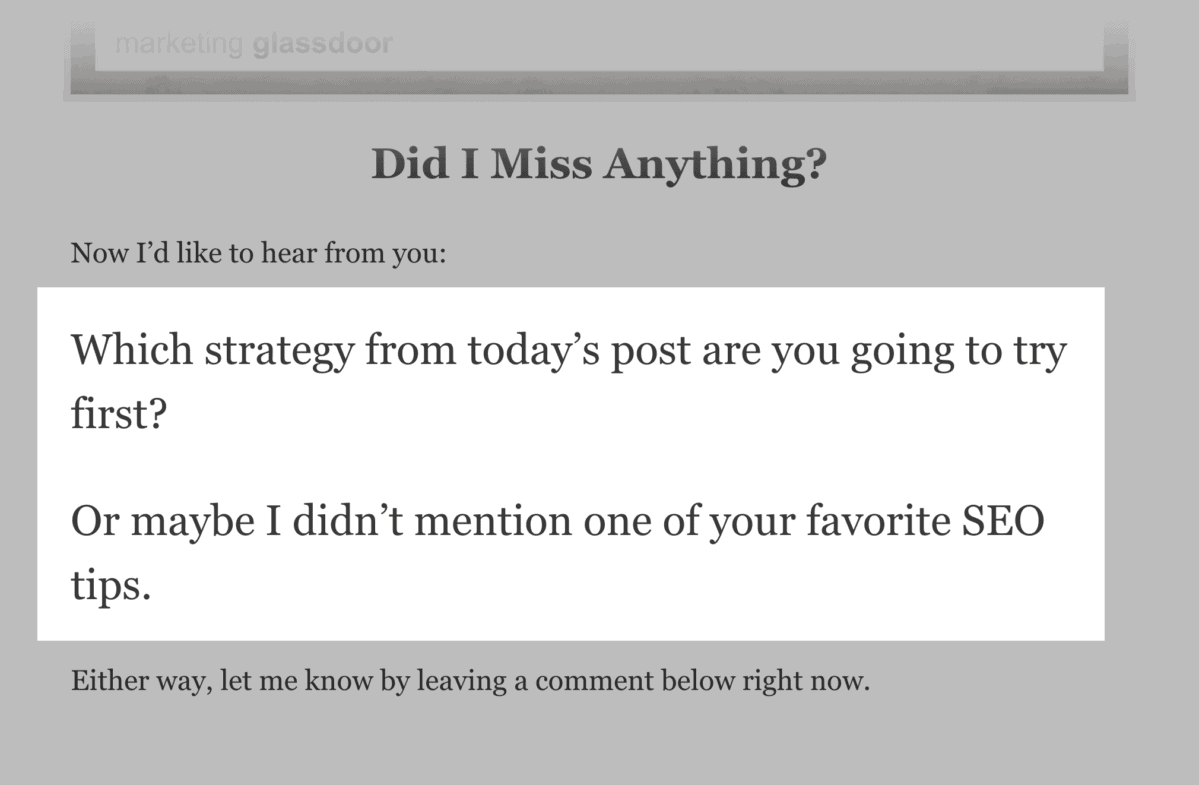
Finally, end with a call to action.
You can ask your readers to comment…
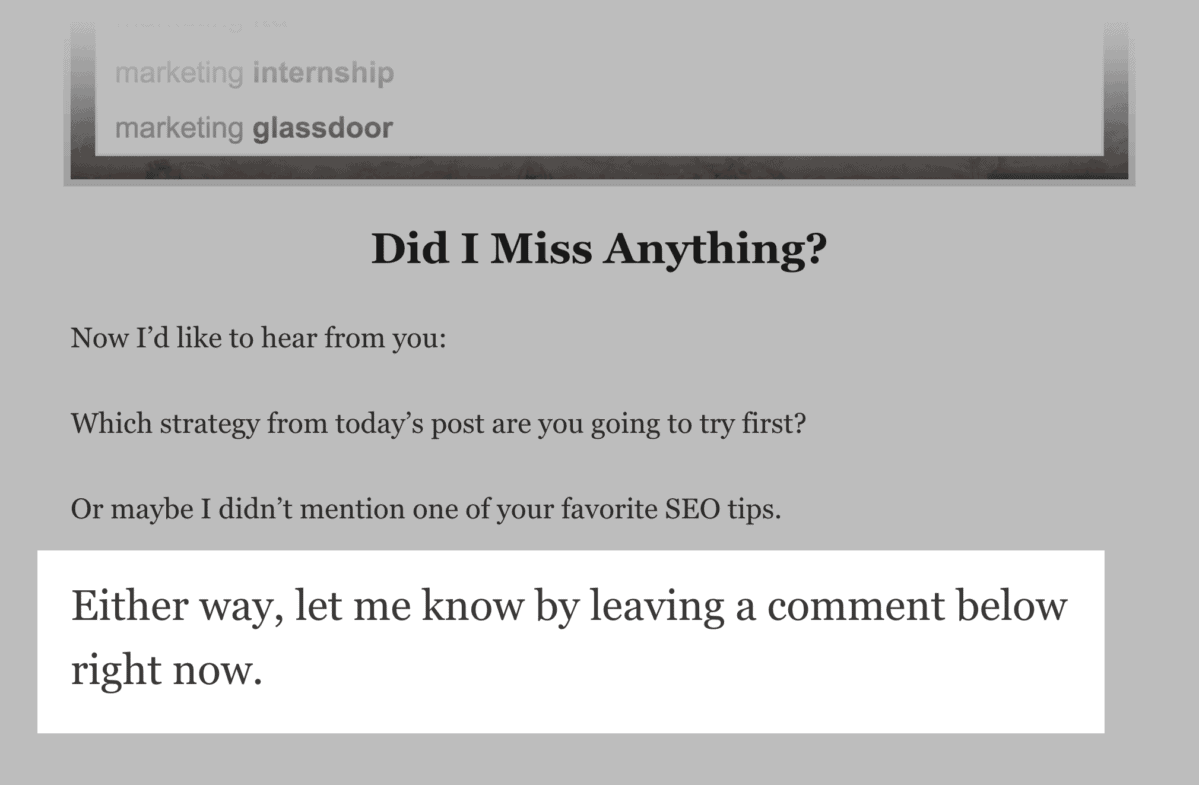
…or to share your content on social media.
Chapter 7:Optimize for SEO

Next, optimize your post for SEO.
And the best way to do that?
Use the 5 on-page SEO strategies I'm
about to show you.
Short URLs
There's no doubt about it:
When it comes to SEO, short URLs work best.

There are two reasons that short URLs outperform long URLs.
First off, your URL helps Google understand your page's topic.
In fact, Google officially recommends short, descriptive URLs.

Second, people use URLs to help them decide what to click on in the search results.
And if your URL is insanely long, people are less likely to click on it:
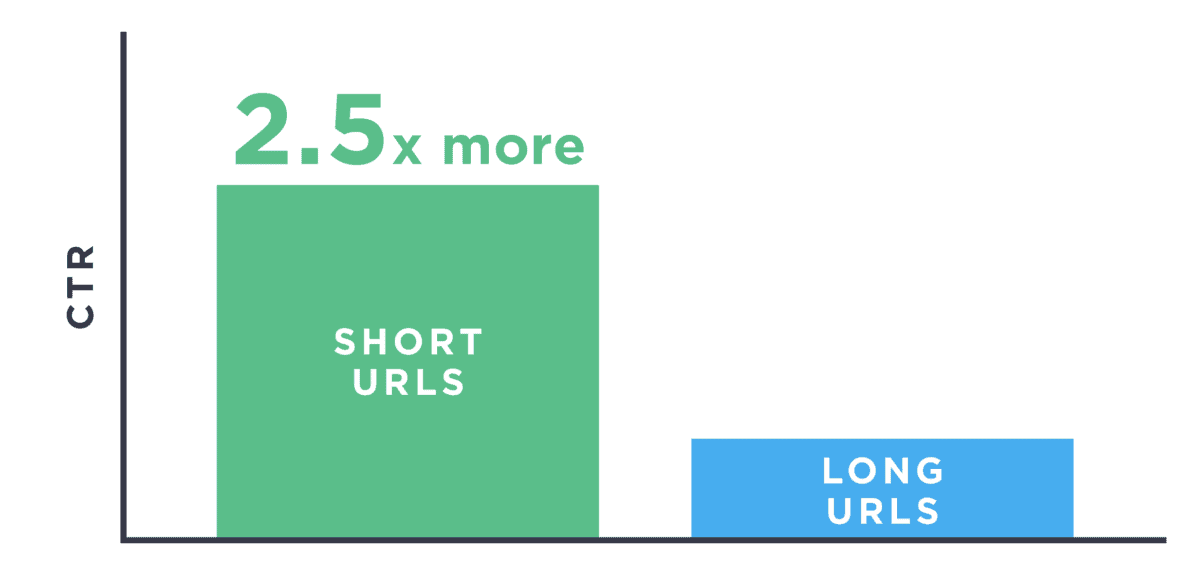
Speaking of…
Meta Description
Nope, search engines don't use your meta description for SEO. That said: your meta description is a GREAT way to get more people to click on your result.
Specifically, you want your meta description to:
- Include your target keyword (Google bolds keywords in the search results)
- Use verbs, like "learn", "find" and "buy"
- Describe your content's USP
- Fit within the ~155 character limit
For example, you can see that my meta description from this post is designed to maximize clicks:
Keyword In Title Tag
This couldn't be any simpler.
Just include your exact keyword in your title tag.
For example, my target keyword for my post "27 Ways to Increase Website Traffic in 2018" is: "increase website traffic".
So I included that keyword in my title tag:
And WordPress page title:
Keyword In Intro
Make sure to use your keyword once in your blog post intro:

Internal Links
Internal linking might be the most underrated SEO strategy on the planet.
That said, internal linking isn't complicated.
Whenever you publish a new post, add 2-5 links to older posts:

You can also go back to older posts and link to your NEW post.
For example, when I published "The Definitive Guide to Keyword Research", I linked out to related content…

…and added a handful of internal links to the new guide:

Bonus Chapter:Promote Your Content

When it comes to blogging, promoting your post is even MORE important than the content itself.
In other words:
You can't just share your post on Twitter and call it a day.
That's why I recommend promoting your content with these 4 tested strategies.
Facebook Retargeting
Yup, Facebook's organic reach is at an all-time low.
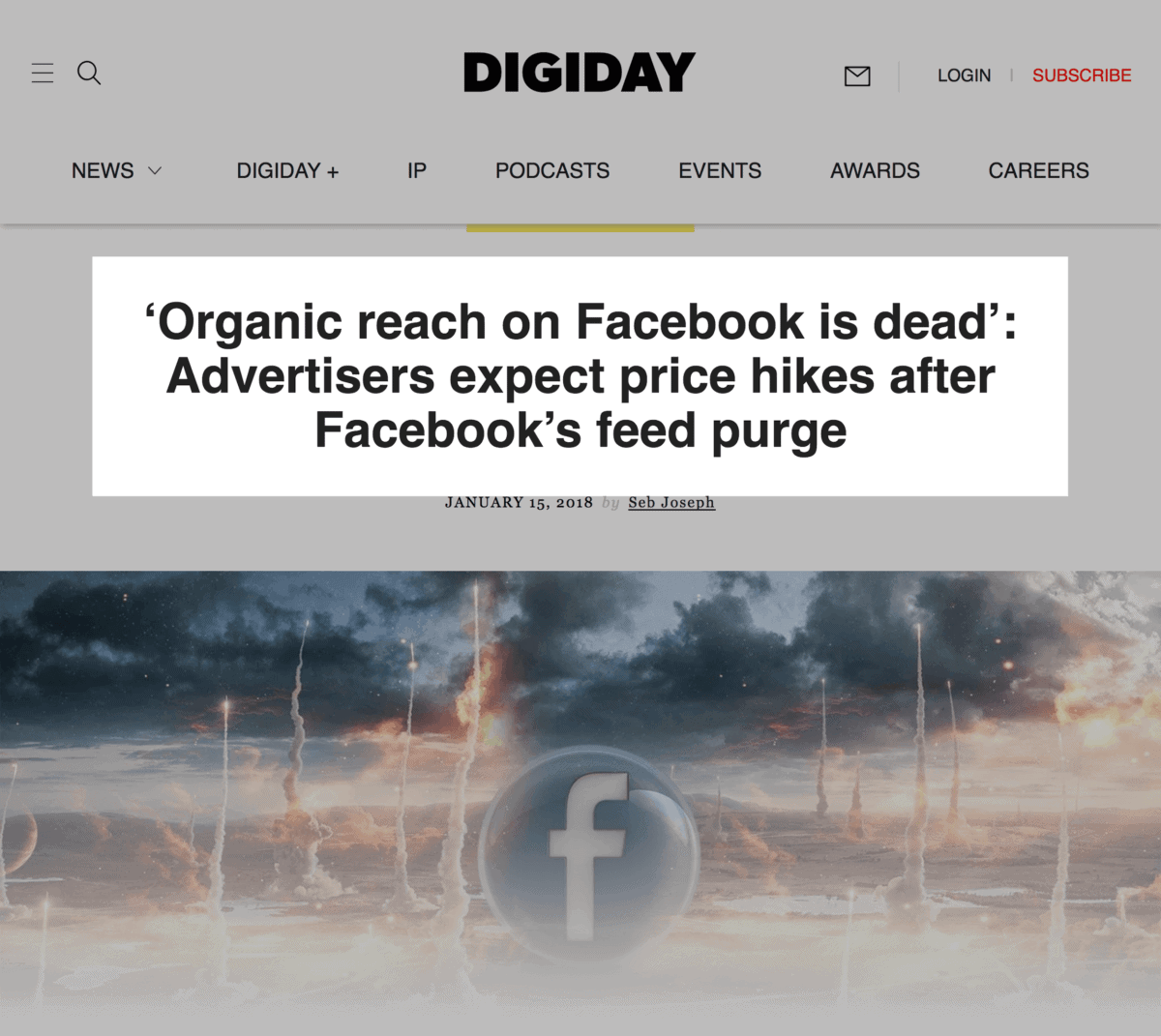
That said:
You can still get in front of your fans… with boosted posts.
(And it doesn't have to cost a fortune)
In fact, I paid 56 cents per click on this boosted post:

The secret?
Retargeting.
Here's the exact process:
First, add Facebook's ad pixel to your site.
Next, share your blog post on Facebook.
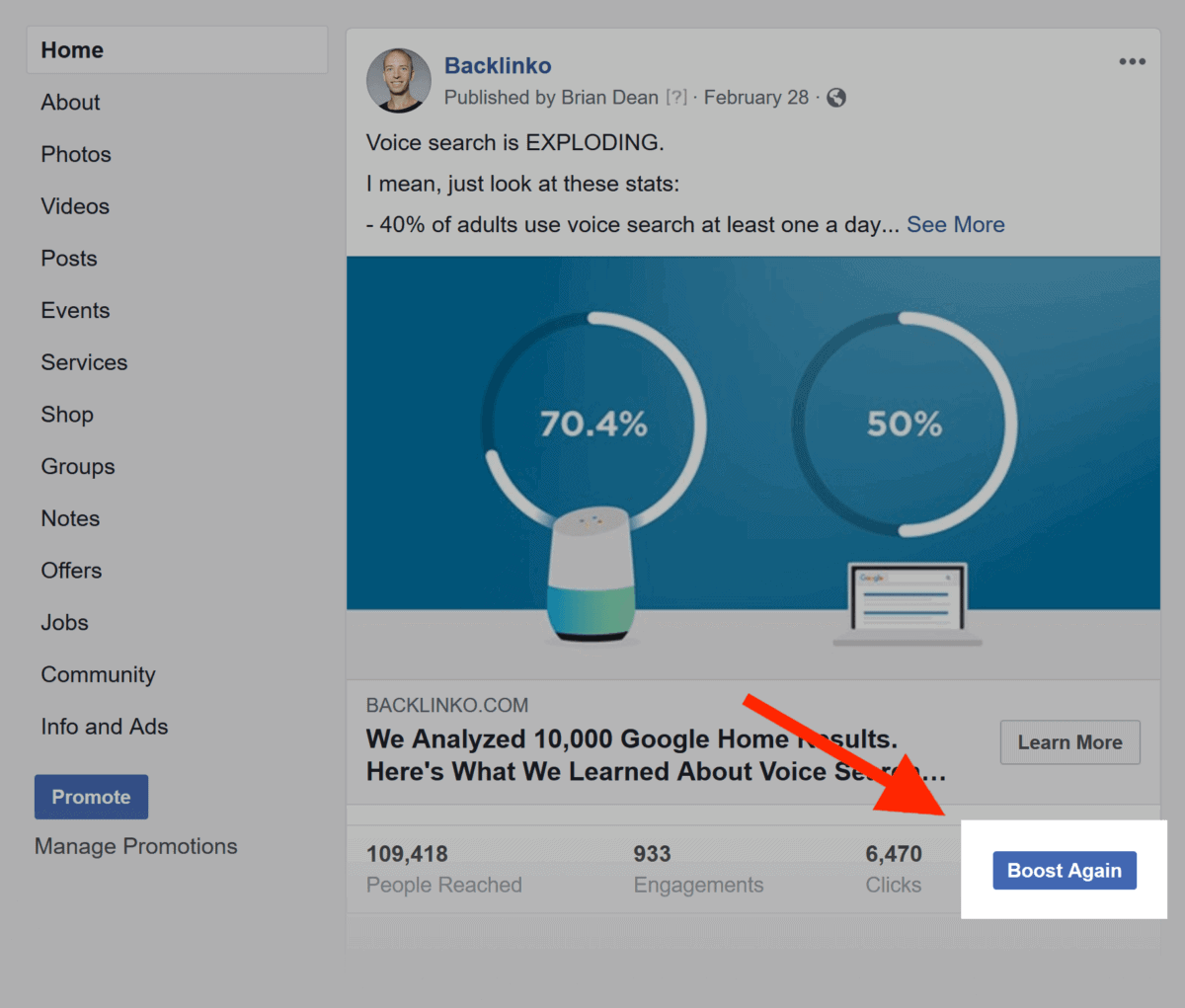
This will get you a handful of likes and comments… which pushes more people to engage with your post later on.
Now that you have some social proof, boost your post. And ONLY target people that visited your site in the last 30-60 days.
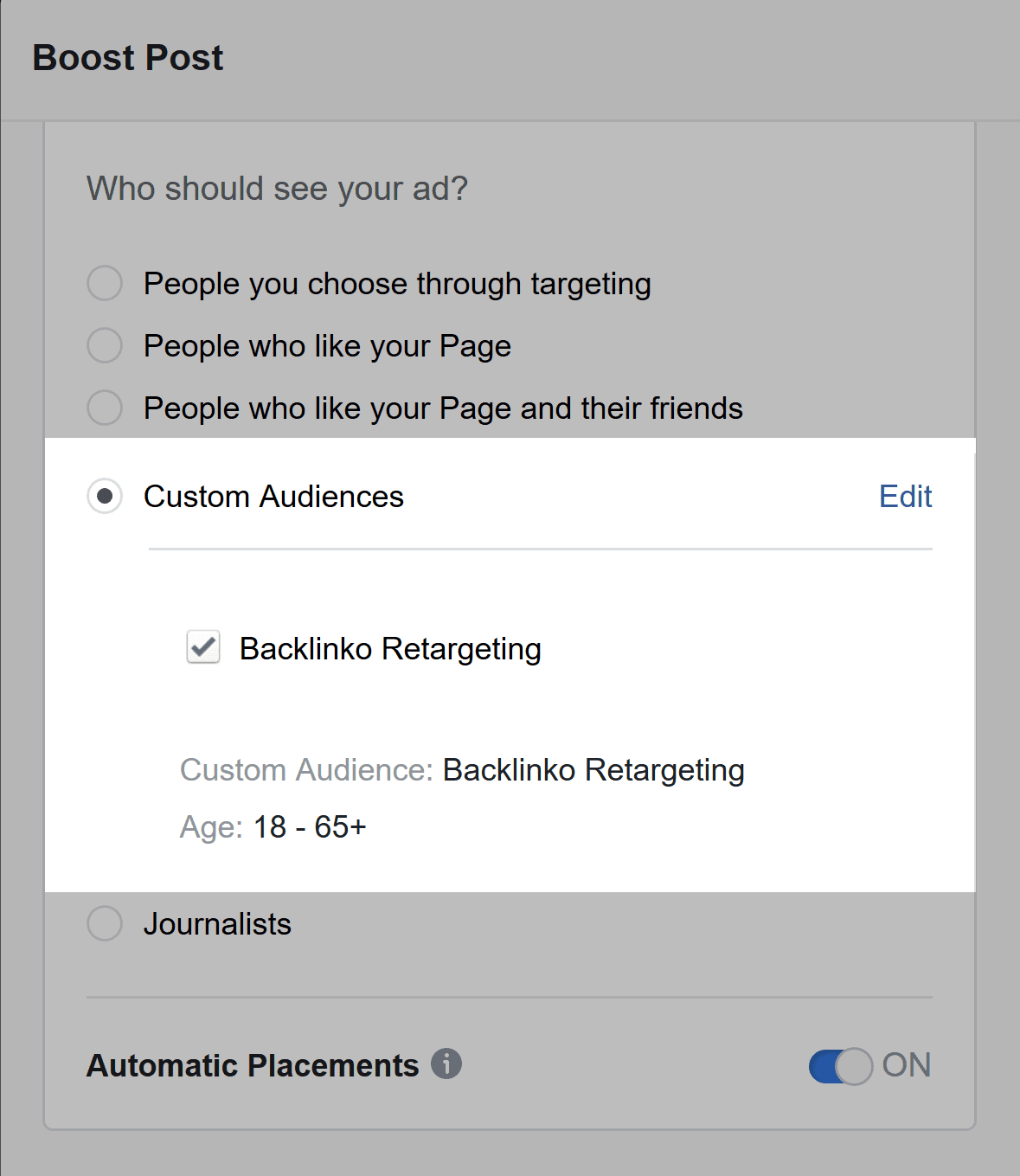
That's all there is to it.
Email Newsletter
This is the ultimate content promotion superhack.
For example, I recently published this post on my blog:

And to get the word out, I tweeted the post…

…and sent a newsletter to my email subscribers.
Which do you think got more clicks?
The newsletter.
In fact, the newsletter got 12.7x more clicks than my Tweet.

With that, here are 3 things I do to get lots of clicks on every newsletter:
First, I keep the design super-duper simple.
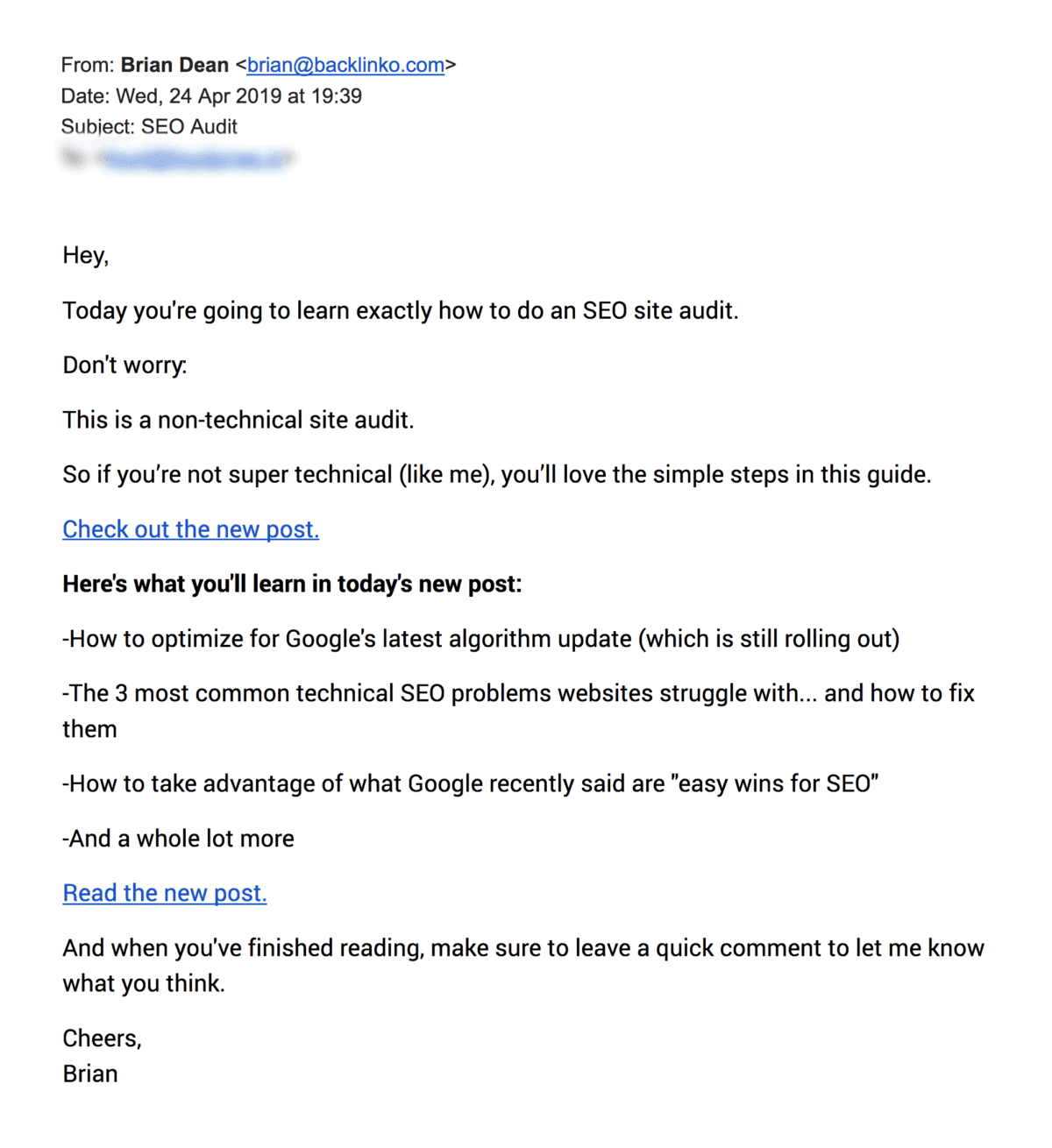
No logo.
No fancy graphics.
Just plain text and links to the post.
Second, I only link to ONE post per newsletter.

Otherwise, your subscribers get "analysis paralysis". And they don't click on anything.
Finally, I only email my best stuff.
That way, when someone gets an email from me they say:
"Nice! Brian's sending me something cool".
Which has helped keep my open rates above 35%… even though I have over 100k email subscribers:

LinkedIn Organic
If you're in B2B, you NEED to hop on LinkedIn.
Unlike Facebook and Twitter, LinkedIn organic reach right now is GREAT.
For example, here's one of my recent LinkedIn posts:

And that single post got 56,872 views.

Insane.
To be clear:
Not every LinkedIn post does this well.
For example, this post was kind of a dud:
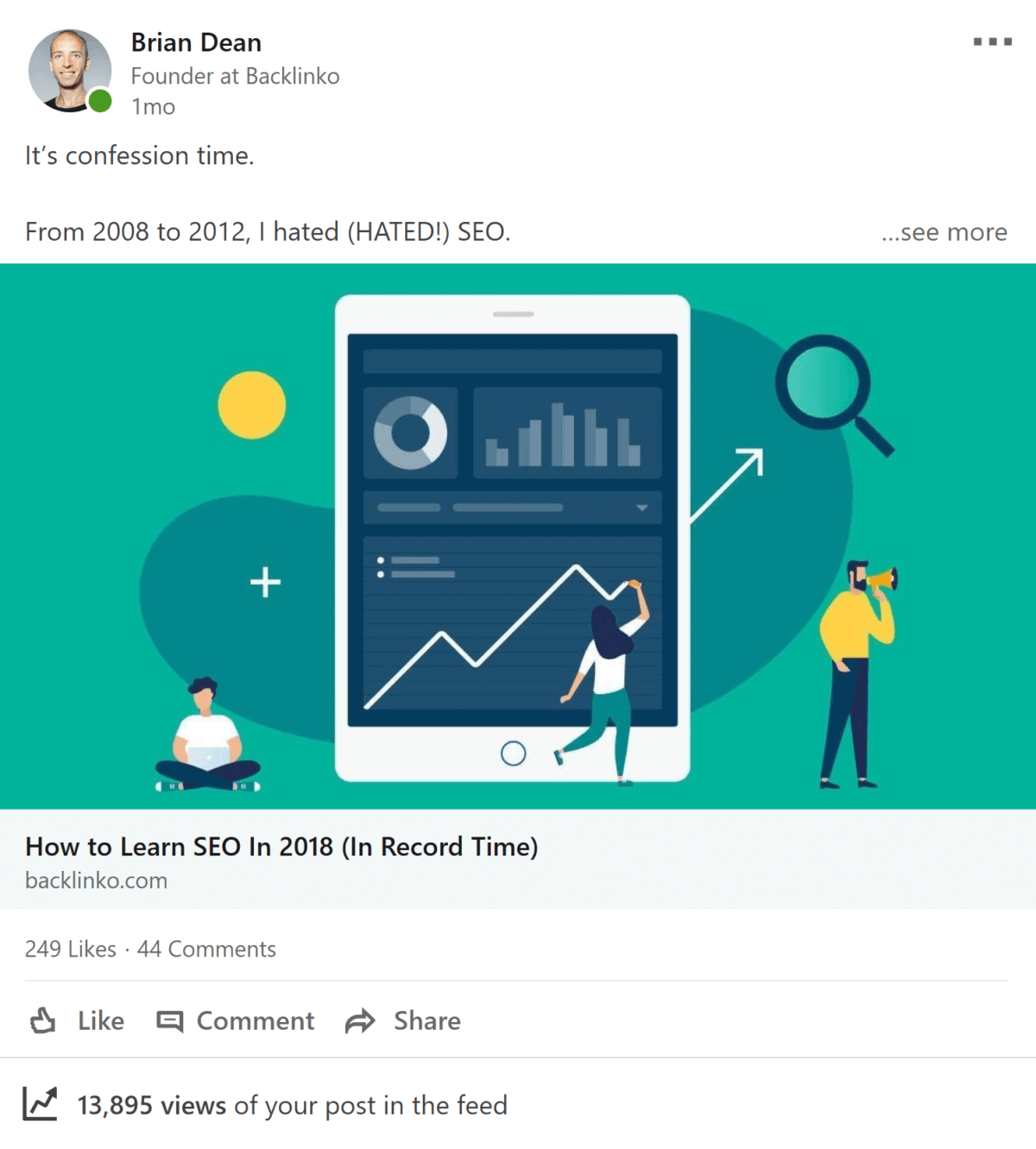
But 13k views is still WAY more than I'm getting on most other social networks.
Email Outreach
Outreach is still the best way to get your content in front of influential people.
But you can't just spam people and expect it to work.
For example, I get generic emails like this all the time:

And I instantly delete them.
But when someone takes the time to send me a personalized message, I'll at least check out their post.

And if the post is a good fit for the Backlinko community, I'll share it:
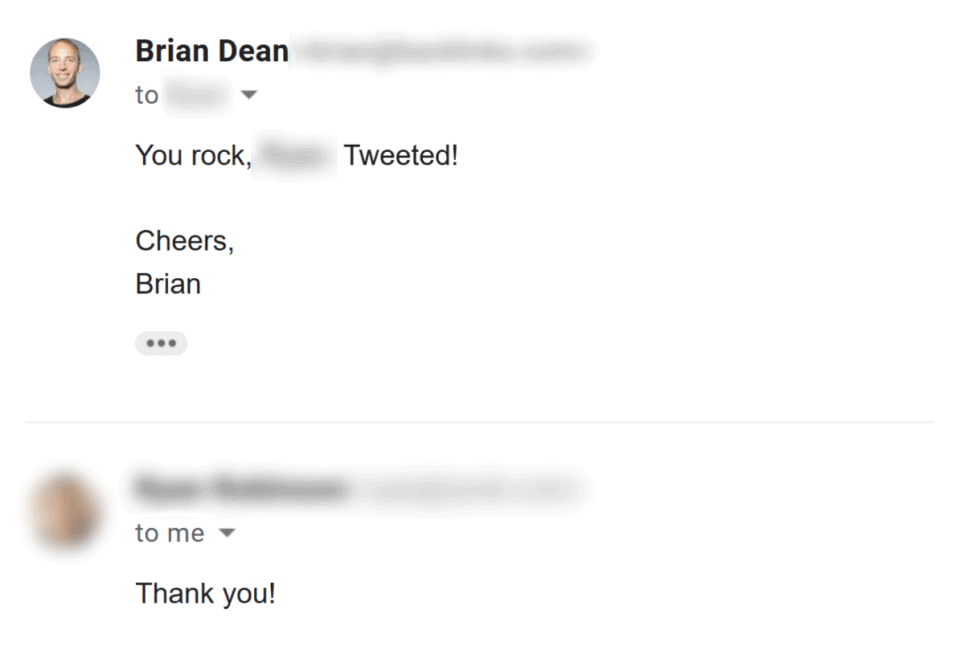
Bonus Chapter:Content Transformation

Email newsletters.
YouTube video scripts.
Social media posts.
I used to write them all from scratch.
But over the last year or so, I've been trying a new content marketing technique:
Content Transformation.
Let me show you how it works with a real-life example…
Earlier this year I wanted to make a YouTube video about backlinks.
Back in the day, I'd open up a blank Google Doc and start on my outline.
But this time, I used Content Transformation.
And the process was MUCH faster.
Specifically, I wrote my video script based on this guide from my blog:
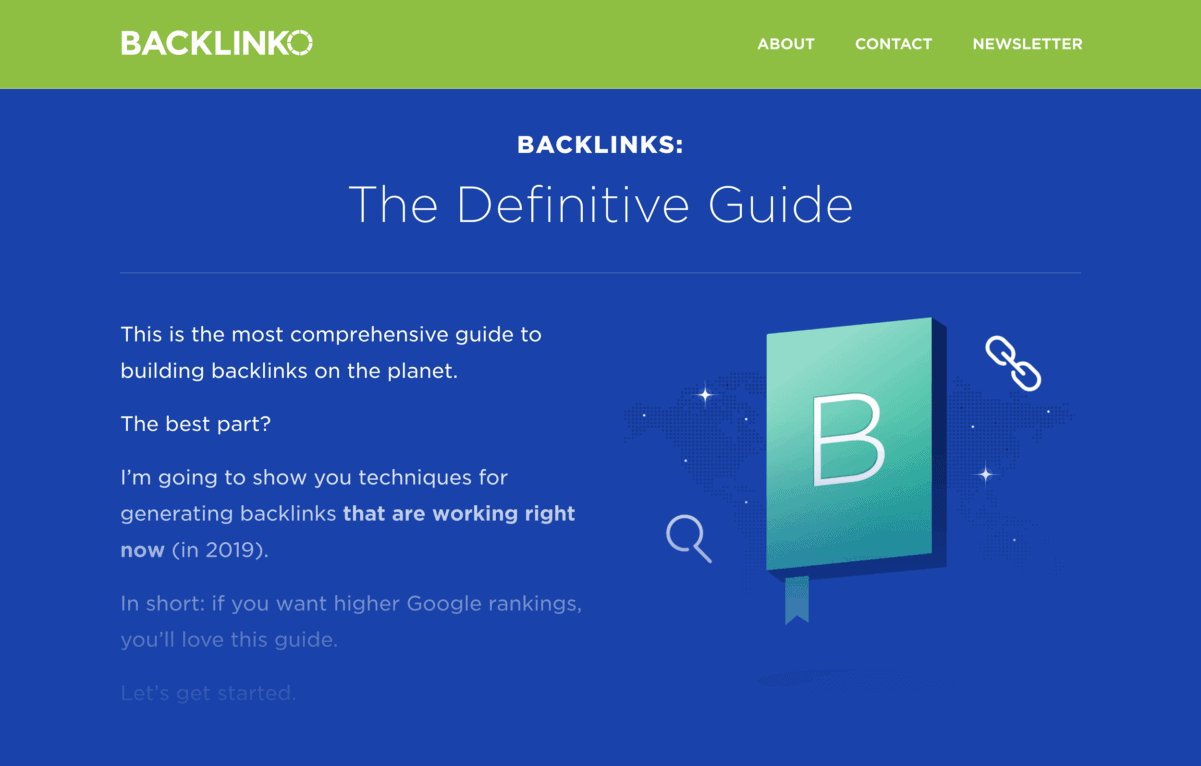
For example, I took this strategy from the guide…
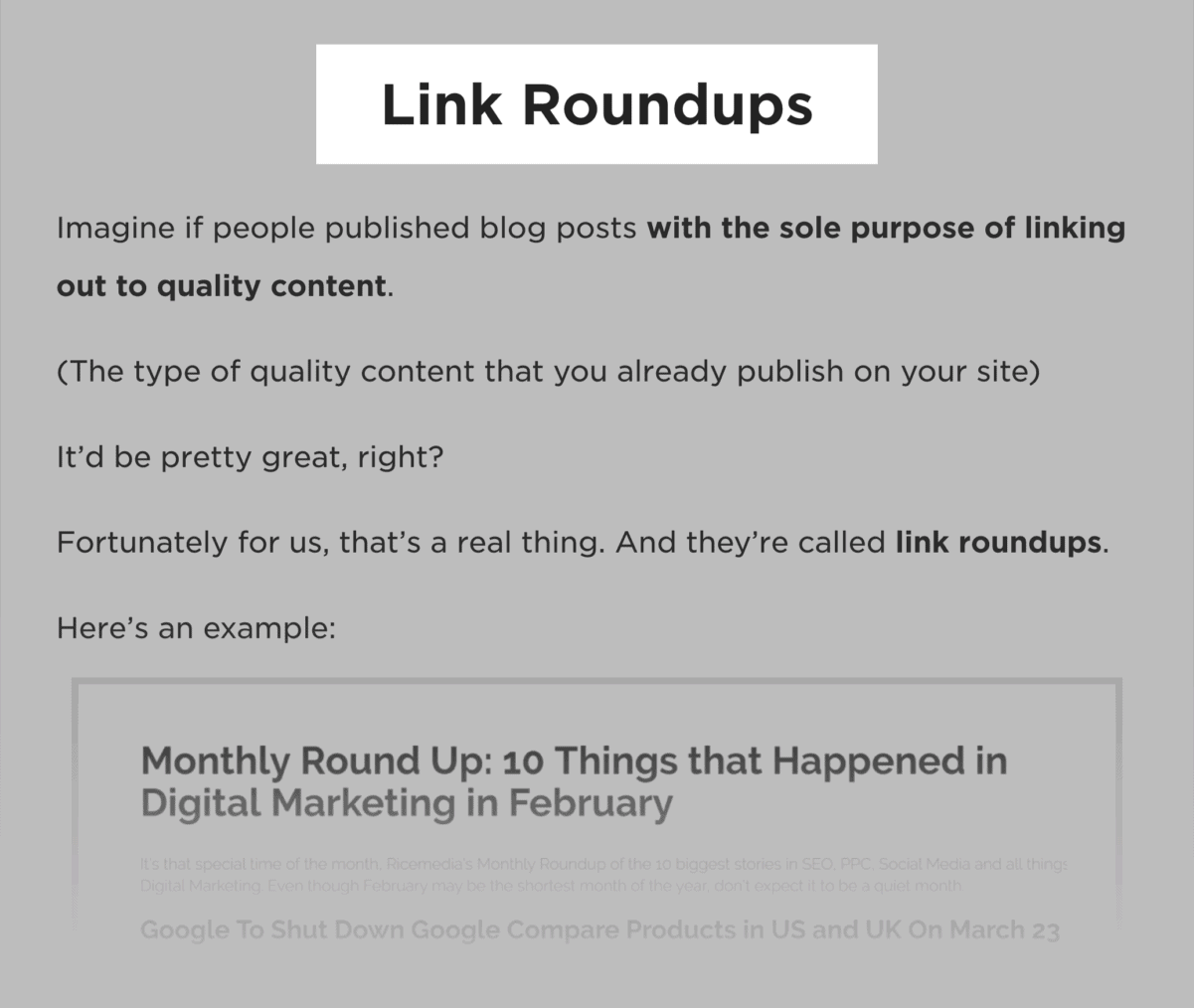
…and reworked it for the video:
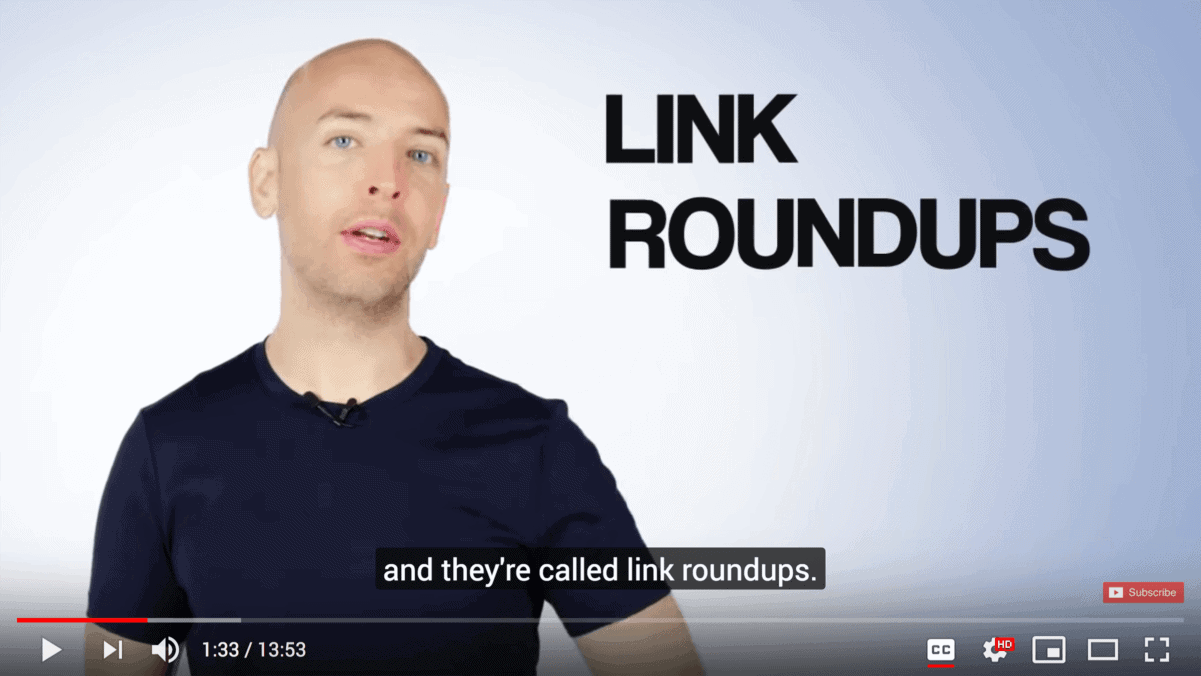
Even though this video was mostly repurposed from existing content, it got 20k views in its first 30 days:
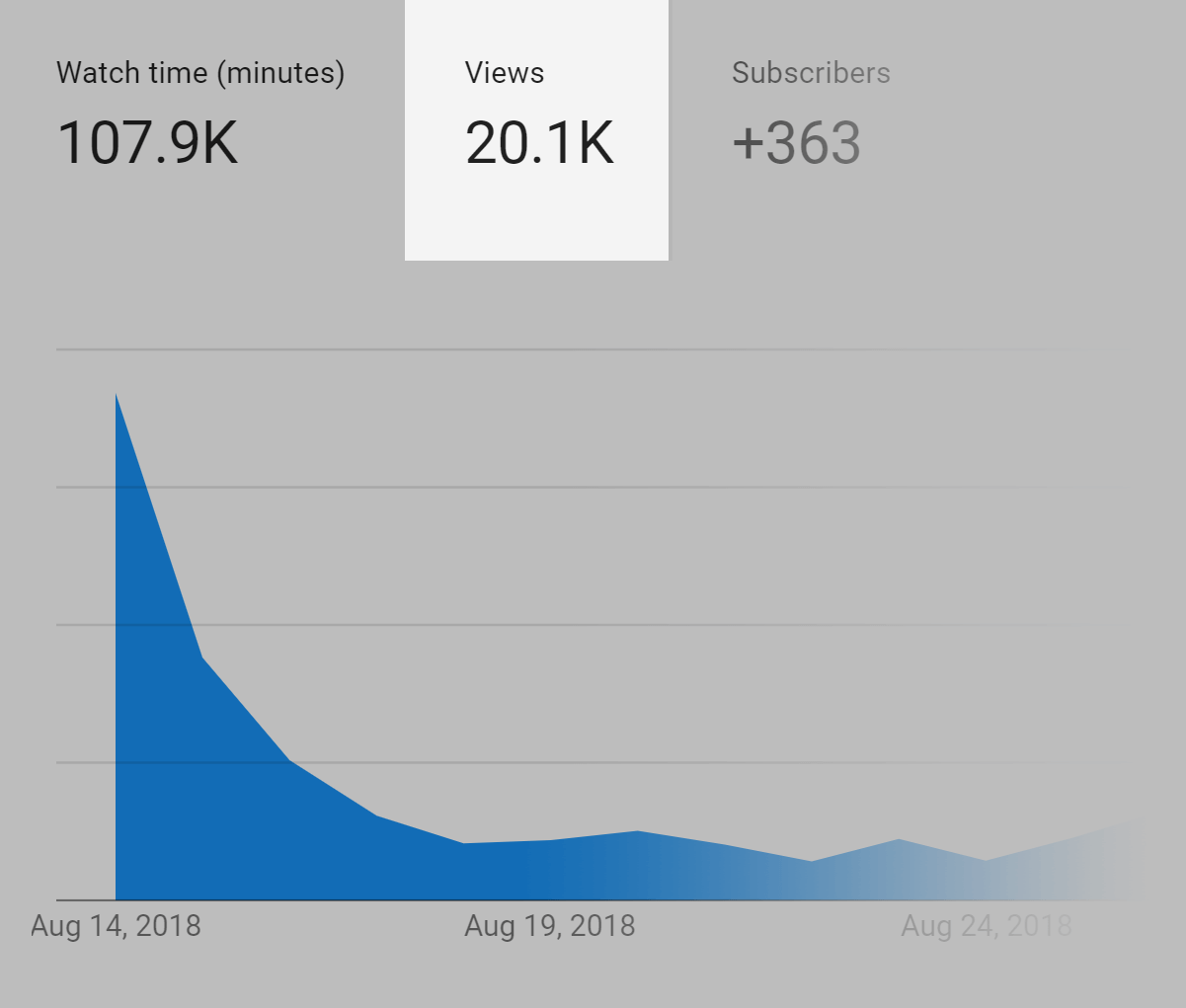
And it now has 88,859 total views:

Not bad.
Now It's Your Turn

I hope this guide showed you how to write a blog post.
Now I'd like to turn it over to you:
What's the #1 tip from this post that you want to try first?
Are you going to start using brackets in your headlines? Or maybe you're going to promote your content on LinkedIn.
Or maybe you have a question about something you read.
Either way, let me know by leaving a comment below right now.
How To Write A Blog Post Backlinko
Source: https://backlinko.com/write-a-blog-post
Posted by: farrgivename.blogspot.com

0 Response to "How To Write A Blog Post Backlinko"
Post a Comment